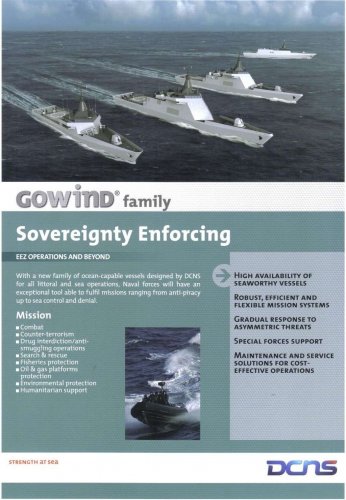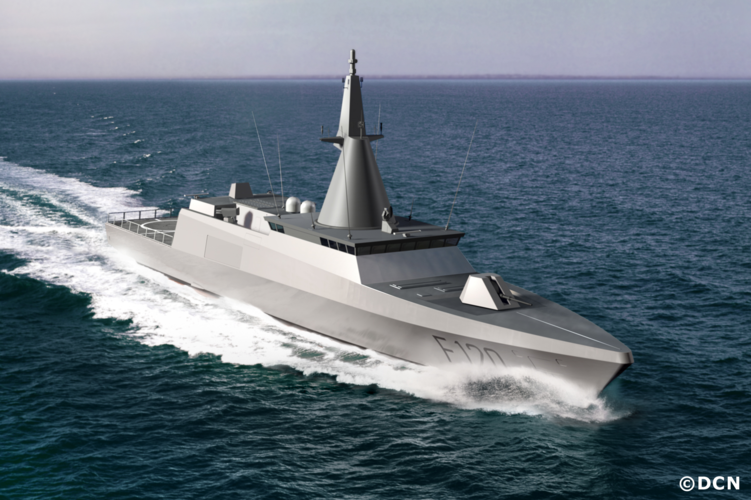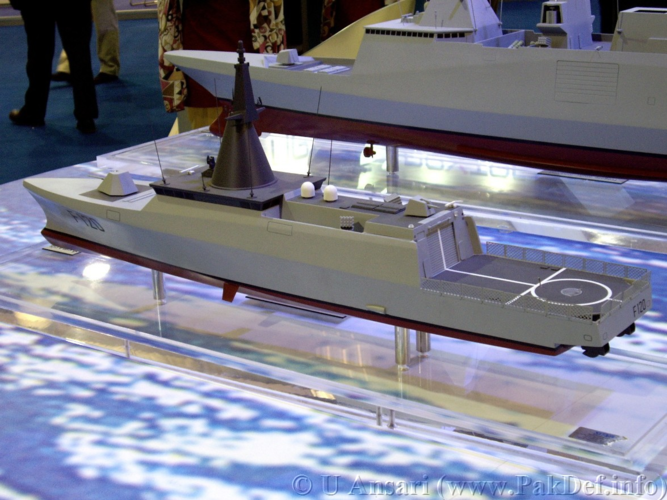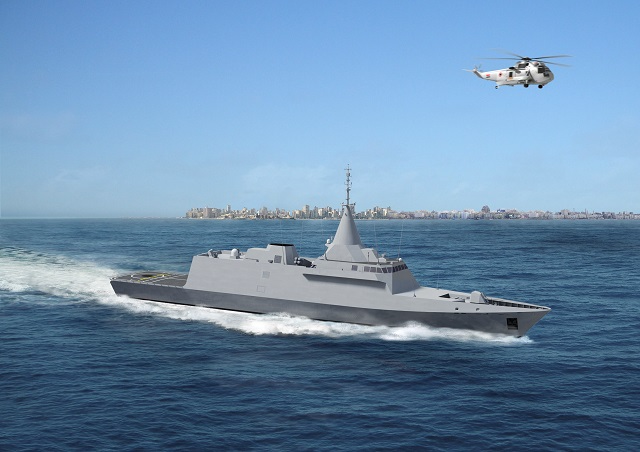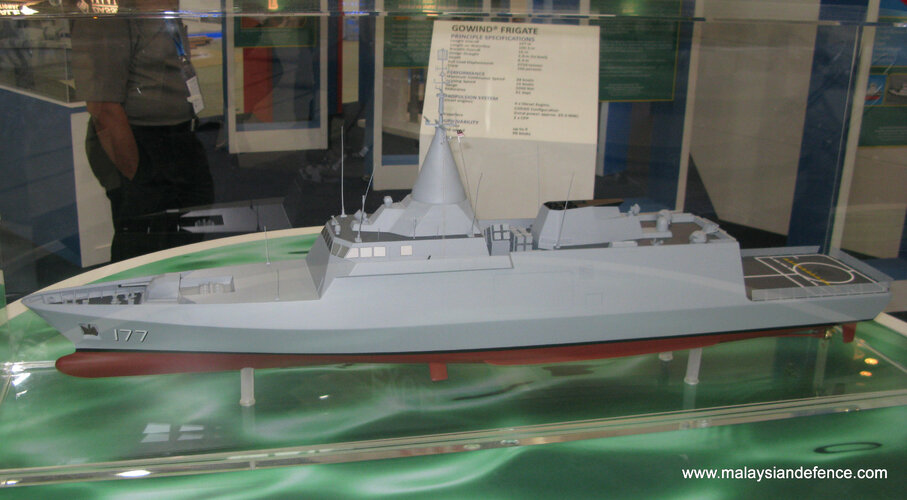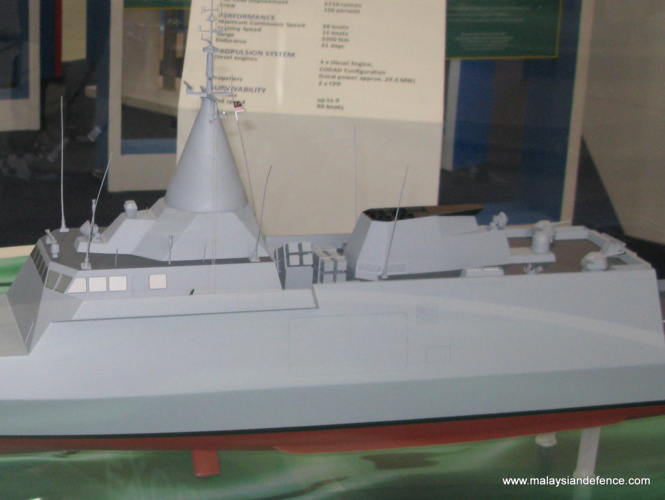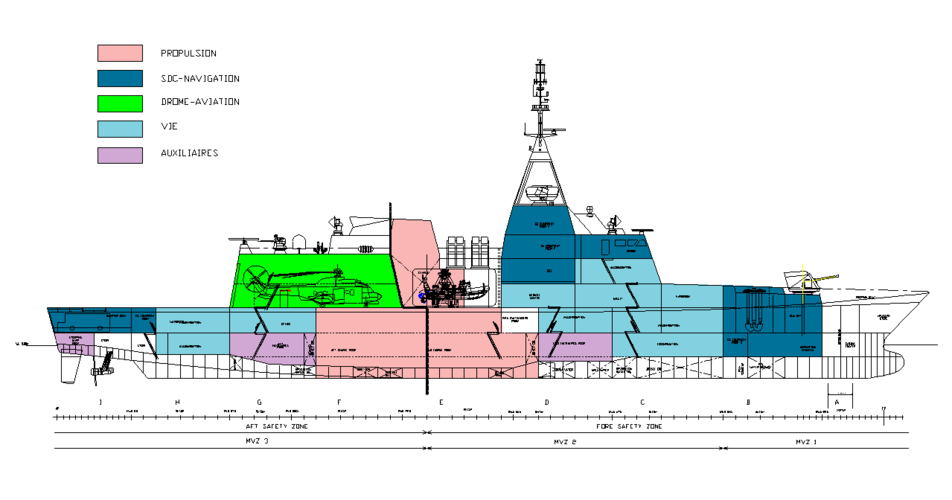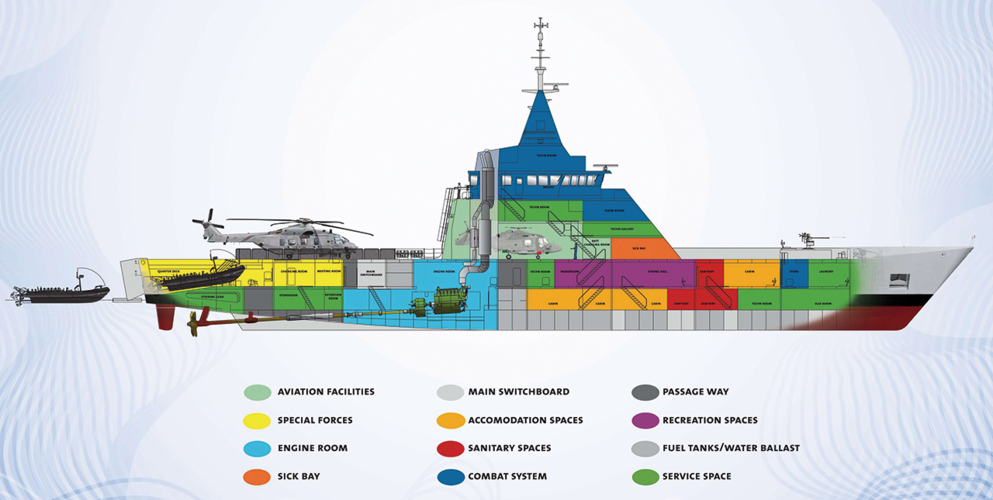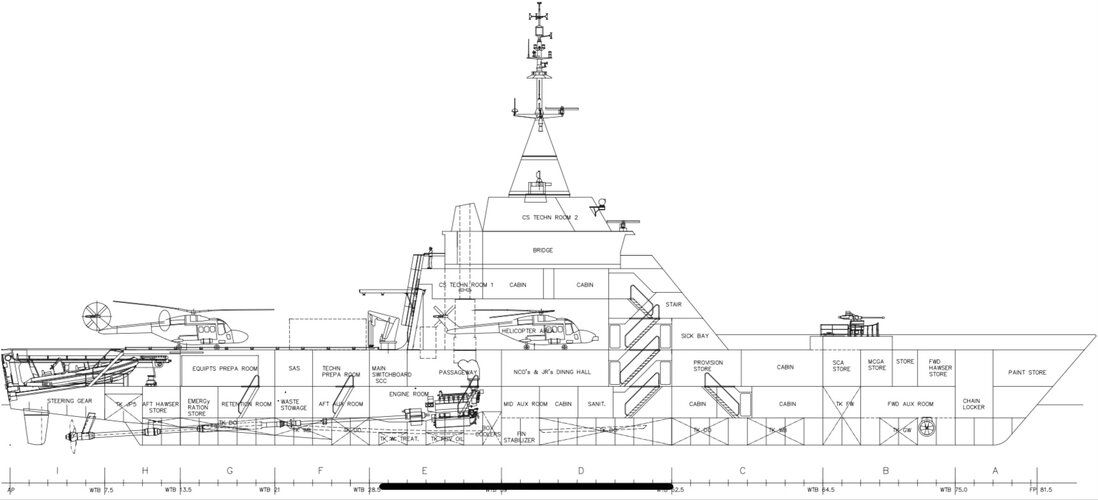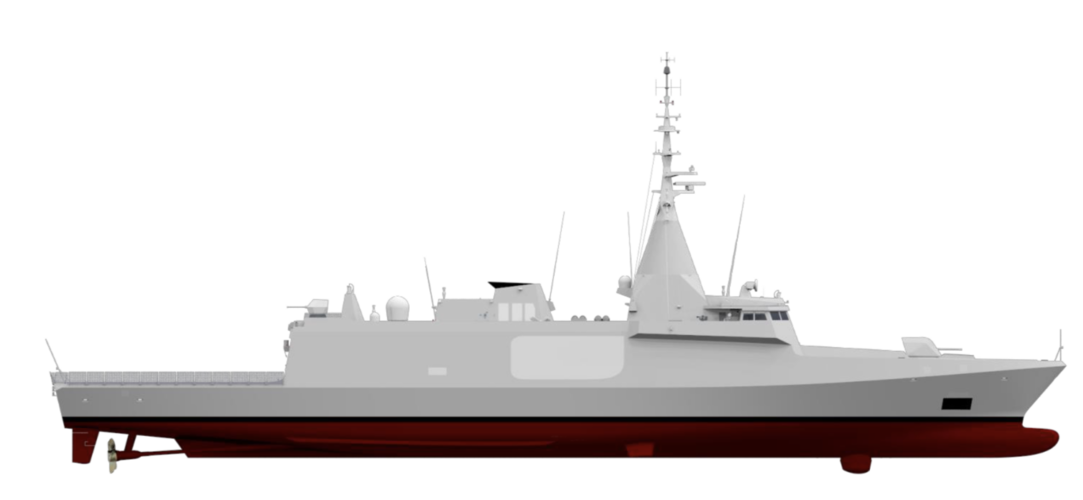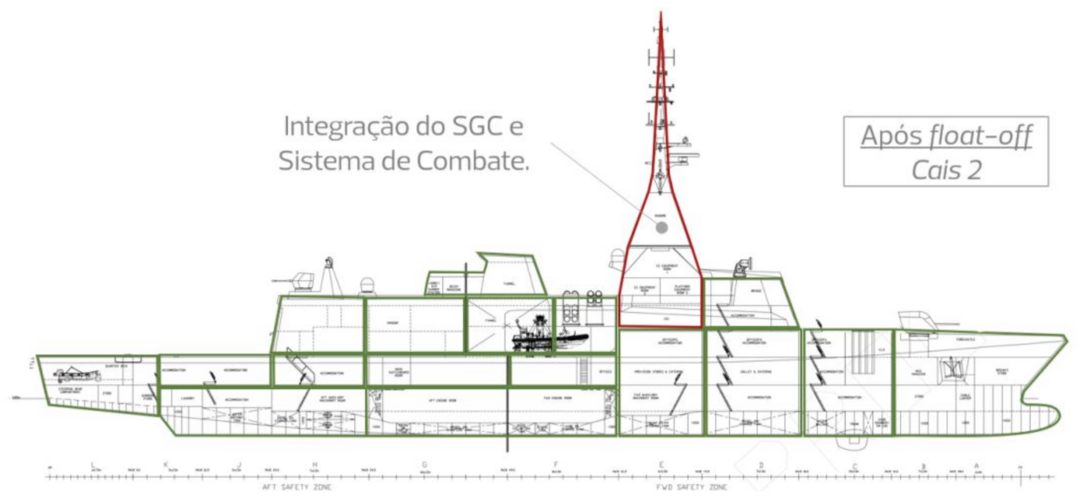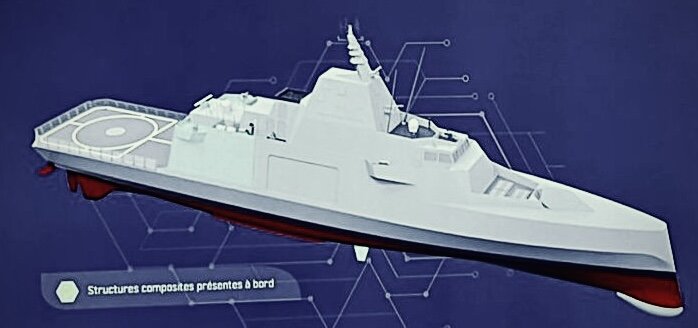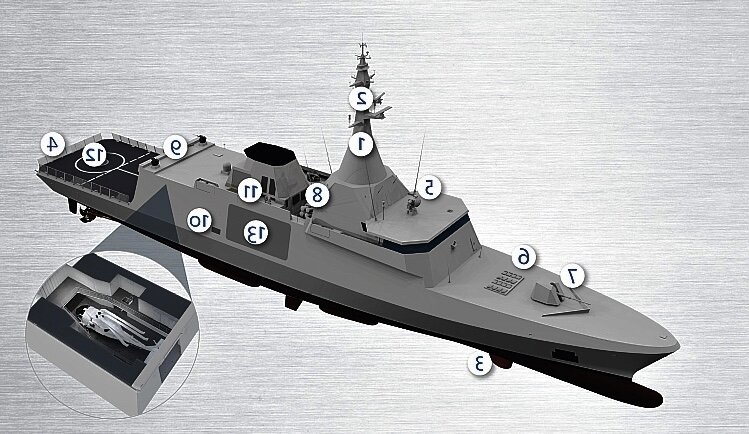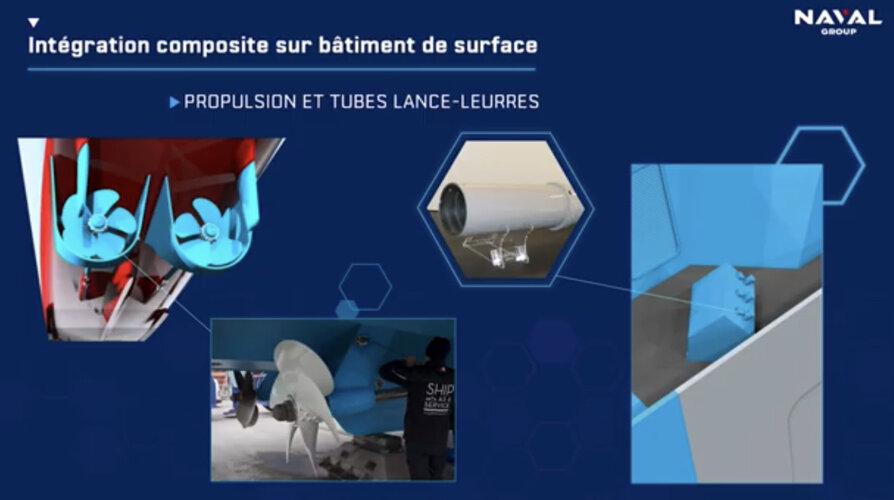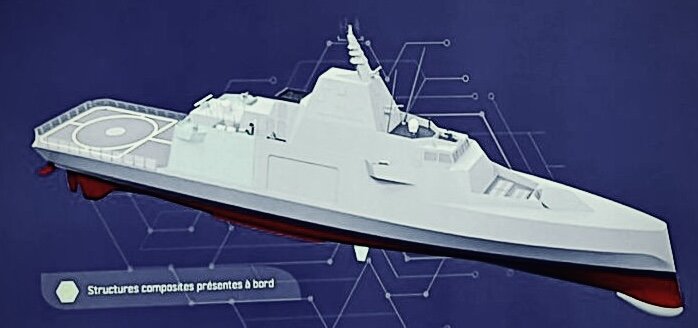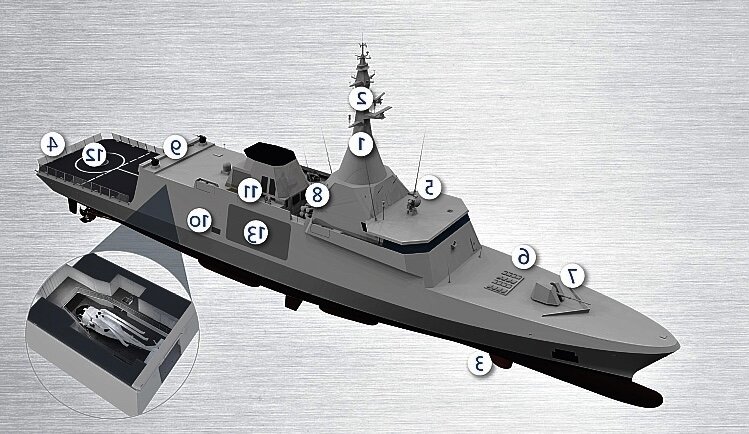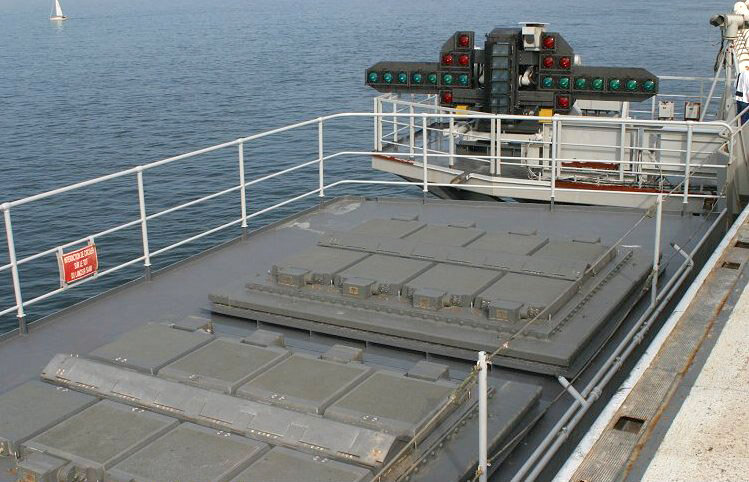You are using an out of date browser. It may not display this or other websites correctly.
You should upgrade or use an alternative browser.
You should upgrade or use an alternative browser.
Found some old info on the 1st generation Gowind corvettes... posting it here so this interesting family of designs doesn’t get lost in the internet abyss.
First up: the Gowind 120.
Then the Gowind 170.
Last the Gowind 200 which was sold to Bulgaria (but cancelled)

Common features include:
- High level of habitability (ANEP 24 standard), with 1-2 man cabins for officers, 2-4 man cabins for NCOs, and 4-6 man cabins for sailors
- Excellent IR signature reduction, with underwater exhausts for diesels
- High standard of survivability (DDS 079-1 standard) with separate engine rooms
First up: the Gowind 120.
Then the Gowind 170.
Last the Gowind 200 which was sold to Bulgaria (but cancelled)
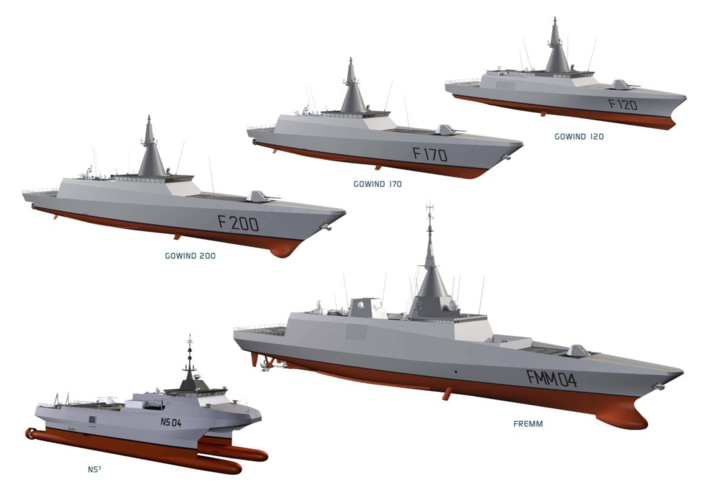
Common features include:
- High level of habitability (ANEP 24 standard), with 1-2 man cabins for officers, 2-4 man cabins for NCOs, and 4-6 man cabins for sailors
- Excellent IR signature reduction, with underwater exhausts for diesels
- High standard of survivability (DDS 079-1 standard) with separate engine rooms
Last edited:
Gowind 120
Length, overall: 80m
Beam : 12 m
Hull depth: 6.3m
Displacement : 1 250 t
Maximum speed :> 30 kts
Range : 2,000 nm @ 15 kts
Endurance : 10 days
Complement : 52 (+8)
Helicopter : Flight deck only for 5t helo, optional retractable hangar
Propulsion : Waterjets
1x 76mm gun
16x Mica VL SAMs
8x Exocet SSMs
1x 20mm gun
Electronics: 3D radar, mine detection sonar, 2x decoy launchers
Note the VLS for Mica NG in the rear superstructure and (retractable?) hangar.
Length, overall: 80m
Beam : 12 m
Hull depth: 6.3m
Displacement : 1 250 t
Maximum speed :> 30 kts
Range : 2,000 nm @ 15 kts
Endurance : 10 days
Complement : 52 (+8)
Helicopter : Flight deck only for 5t helo, optional retractable hangar
Propulsion : Waterjets
1x 76mm gun
16x Mica VL SAMs
8x Exocet SSMs
1x 20mm gun
Electronics: 3D radar, mine detection sonar, 2x decoy launchers
https://web.archive.org/web/20071020145111/http://www.dcn.fr/us/offre/imprimer.php?produit=gowind120
Note the VLS for Mica NG in the rear superstructure and (retractable?) hangar.
Attachments
Last edited:
Gowind 170
Length, overall : 95 m
Beam : 14 m
Draft: 3 m
Hull depth: 7.3m
Displacement : 1 700 t
Maximum speed : > 30 kts
Range : 3 000 mn @ 15kts
Endurance : > 20 days
Complement : 65 (+15)
Helicopter : flight deck & hangar for 5t helicopter Propulsion : 6 x Paxman 18 VP 185 (6 x 4000 kW) driving 3 waterjets
1x 76mm gun
16x Mica VL or Aster 15 SAMs
8x Exocet SSMs
1x 30mm gun
Electronics: 3D radar, mine detection and torpedo alert sonars, 2x decoy launchers
Optional ASW version with 2x triple torpedo tubes and Captas towed sonar (drawing below)
Length, overall : 95 m
Beam : 14 m
Draft: 3 m
Hull depth: 7.3m
Displacement : 1 700 t
Maximum speed : > 30 kts
Range : 3 000 mn @ 15kts
Endurance : > 20 days
Complement : 65 (+15)
Helicopter : flight deck & hangar for 5t helicopter Propulsion : 6 x Paxman 18 VP 185 (6 x 4000 kW) driving 3 waterjets
1x 76mm gun
16x Mica VL or Aster 15 SAMs
8x Exocet SSMs
1x 30mm gun
Electronics: 3D radar, mine detection and torpedo alert sonars, 2x decoy launchers
Optional ASW version with 2x triple torpedo tubes and Captas towed sonar (drawing below)
Attachments
-
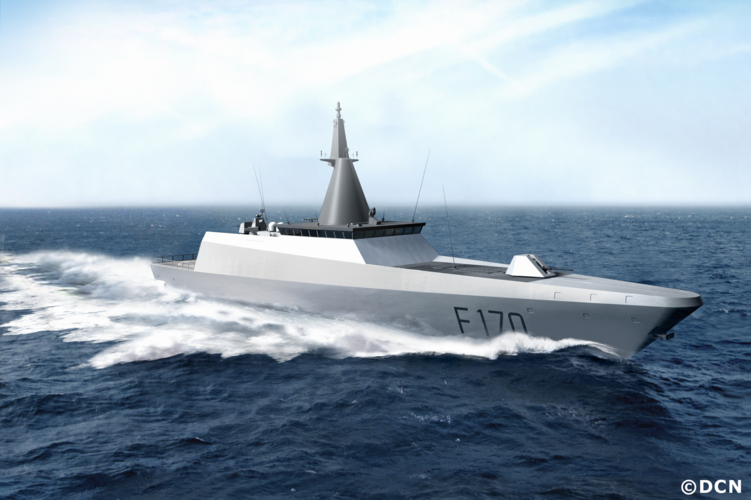 D5AD946B-A34C-4E02-9010-57FD84F3B5DD.png4 MB · Views: 256
D5AD946B-A34C-4E02-9010-57FD84F3B5DD.png4 MB · Views: 256 -
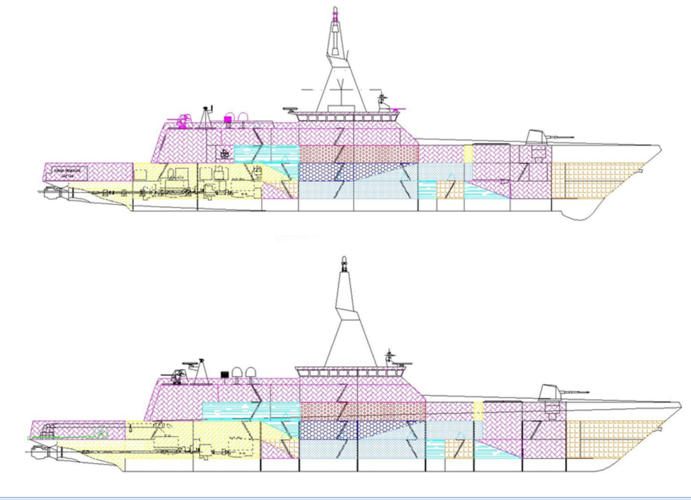 DCBBE222-3E23-4CBC-8919-4451E632B783.png740.7 KB · Views: 252
DCBBE222-3E23-4CBC-8919-4451E632B783.png740.7 KB · Views: 252 -
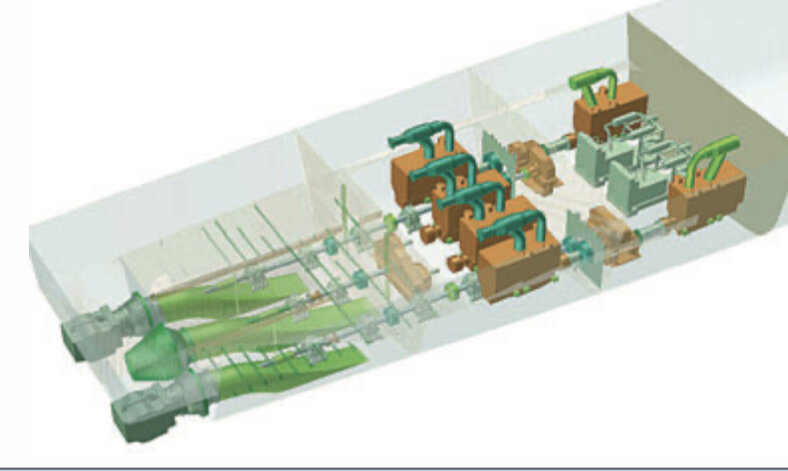 D43CB13D-DA95-4D96-8940-088A801A5987.jpeg196.6 KB · Views: 251
D43CB13D-DA95-4D96-8940-088A801A5987.jpeg196.6 KB · Views: 251 -
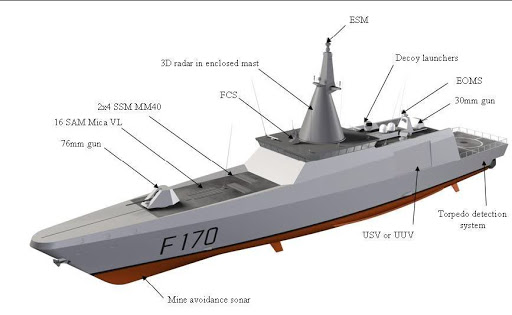 A1C62F15-03B1-478E-A0FE-132B8B435299.png108.5 KB · Views: 207
A1C62F15-03B1-478E-A0FE-132B8B435299.png108.5 KB · Views: 207 -
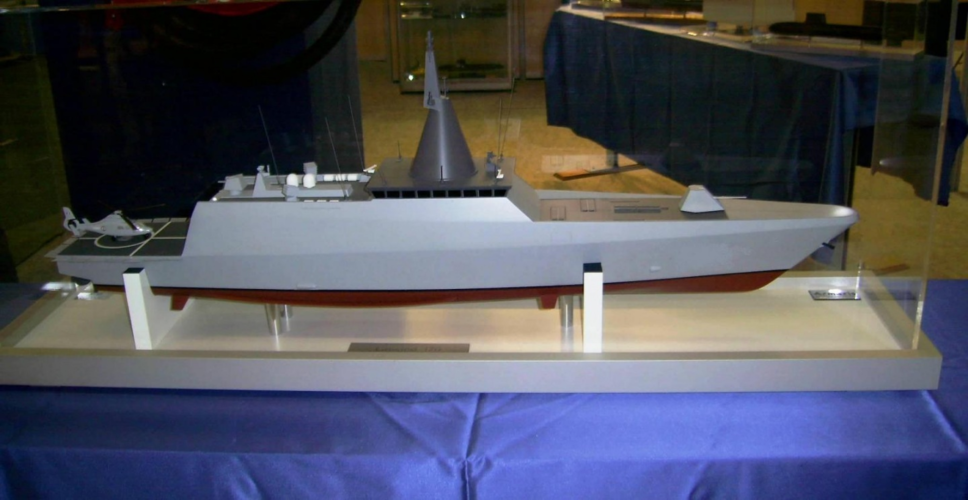 2EF319BD-8983-40E6-82F0-9426159CA1D9.png1.3 MB · Views: 190
2EF319BD-8983-40E6-82F0-9426159CA1D9.png1.3 MB · Views: 190
Last edited:
Gowind 200
Length, overall : 103 m
Beam : 14.2 m
Draft: 4.5 m (to bottom of hull sonar)
Hull depth: 7.3m
Displacement : 1,950 t
Maximum speed : > 30 kts
Range : 3 000 mn @ 15kts
Endurance : 20 days
Complement : 70 (+15)
Helicopter : flight deck & hangar for 10 t helicopter
Propulsion : CODAD: 2x MAN B&W 16 RK280 (2 x 7200 kW) + 4x Paxman 18 VP 185 (4x 4000 kW) driving 3 waterjets
1x 76mm gun
16x Mica VL or Aster 15 SAMs
8x Exocet SSMs
1x 30mm gun
2x triple torpedo tubes
Electronics: Thales MRR 3D radar, Thales Kingklip hull mounted and Captas UMS 4200 towed sonars, 2x decoy launchers
Length, overall : 103 m
Beam : 14.2 m
Draft: 4.5 m (to bottom of hull sonar)
Hull depth: 7.3m
Displacement : 1,950 t
Maximum speed : > 30 kts
Range : 3 000 mn @ 15kts
Endurance : 20 days
Complement : 70 (+15)
Helicopter : flight deck & hangar for 10 t helicopter
Propulsion : CODAD: 2x MAN B&W 16 RK280 (2 x 7200 kW) + 4x Paxman 18 VP 185 (4x 4000 kW) driving 3 waterjets
1x 76mm gun
16x Mica VL or Aster 15 SAMs
8x Exocet SSMs
1x 30mm gun
2x triple torpedo tubes
Electronics: Thales MRR 3D radar, Thales Kingklip hull mounted and Captas UMS 4200 towed sonars, 2x decoy launchers
Attachments
-
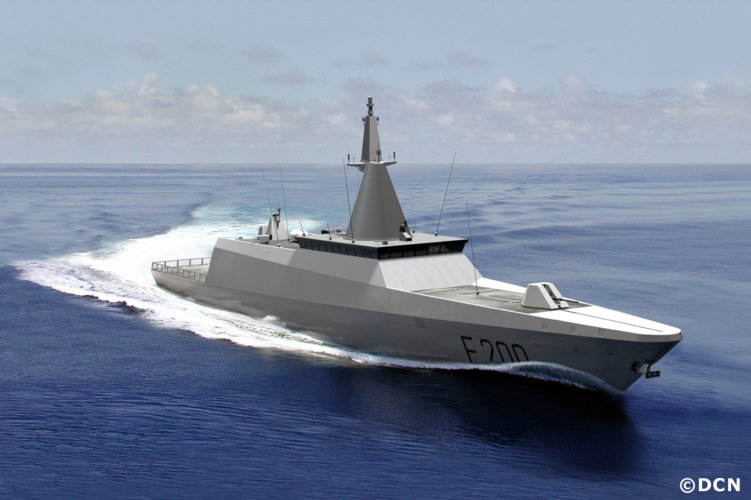 41A477DD-0CF9-4AE7-856B-8C912929B41F.png3.3 MB · Views: 215
41A477DD-0CF9-4AE7-856B-8C912929B41F.png3.3 MB · Views: 215 -
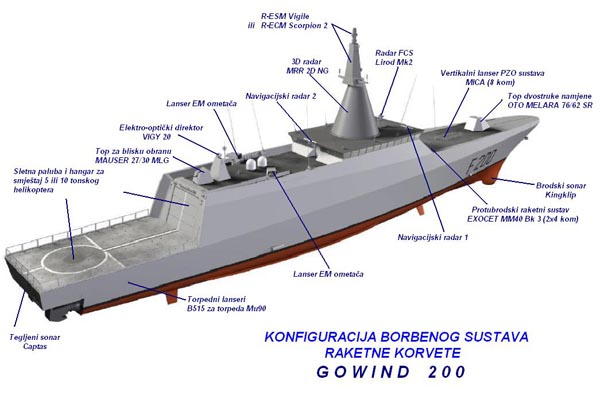 95691552-0B47-424E-8F69-55259FF867E6.png242.1 KB · Views: 239
95691552-0B47-424E-8F69-55259FF867E6.png242.1 KB · Views: 239 -
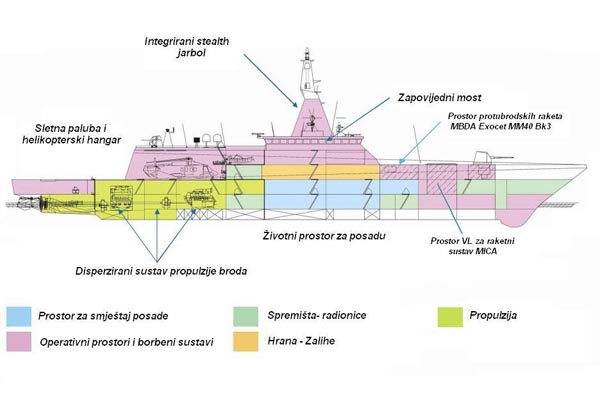 601E8A07-86BD-4894-A7D1-10716B547797.png159.1 KB · Views: 238
601E8A07-86BD-4894-A7D1-10716B547797.png159.1 KB · Views: 238 -
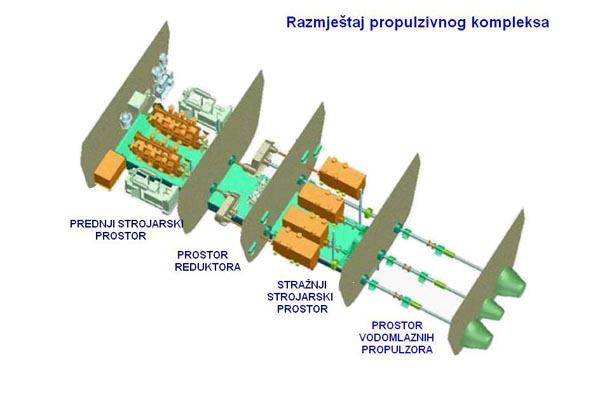 26EF6C6E-D1AE-4BA3-B43A-D33BBE66358A.png204 KB · Views: 218
26EF6C6E-D1AE-4BA3-B43A-D33BBE66358A.png204 KB · Views: 218 -
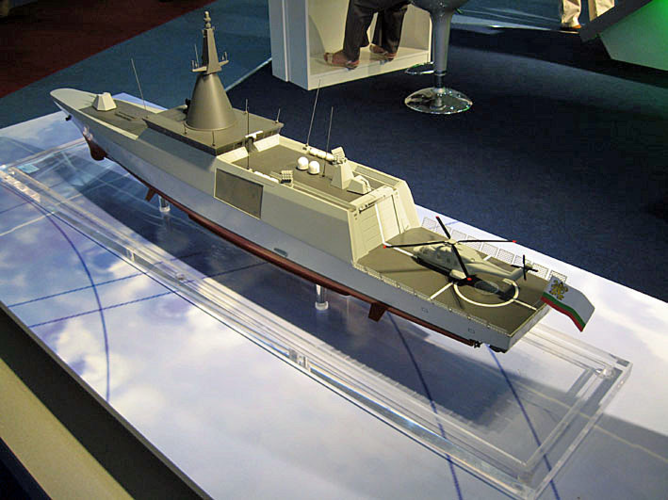 76577A17-9836-478A-B4B4-D1E092001AEA.png653.7 KB · Views: 179
76577A17-9836-478A-B4B4-D1E092001AEA.png653.7 KB · Views: 179 -
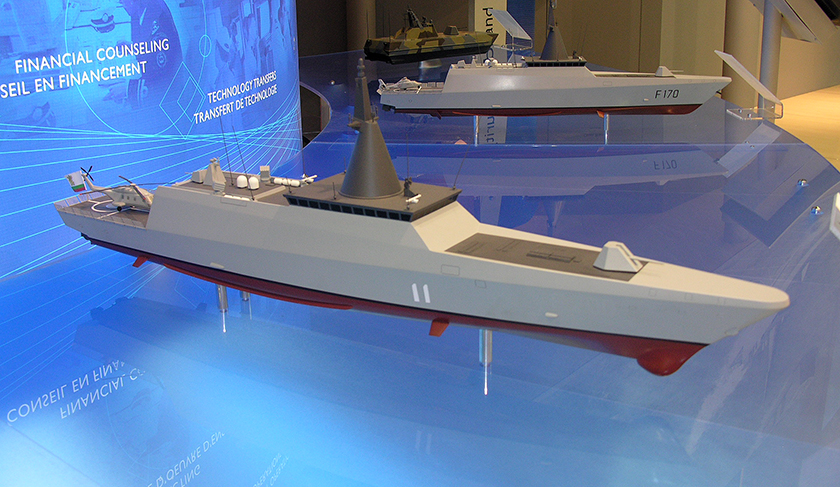 BDFC4671-1E76-4F1F-B7E7-8AF3C7A8349E.png915.3 KB · Views: 188
BDFC4671-1E76-4F1F-B7E7-8AF3C7A8349E.png915.3 KB · Views: 188 -
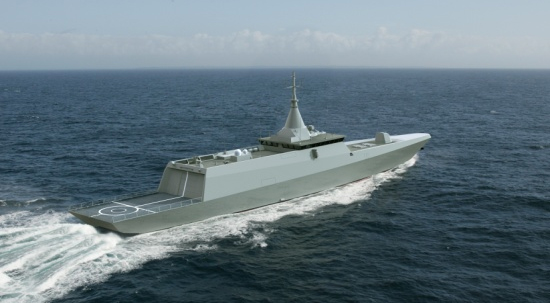 F61E784F-13DA-4E3C-A459-F2030CA5ADD3.png225.9 KB · Views: 183
F61E784F-13DA-4E3C-A459-F2030CA5ADD3.png225.9 KB · Views: 183
Last edited:
Sorry I don’t understand the question?Corvette designs?
jstar
ACCESS: Secret
- Joined
- 12 October 2007
- Messages
- 345
- Reaction score
- 425
"Found some old info on the 1st generation Gowind corvettes... posting it here so this interesting family of designs doesn’t get lost in the internet abyss." Post #2 yesterday.Corvette designs?
I assume these Gowind designs are connected to the other ones the Gowind 1000, 2500 (which became the Egyptian El Fateh) designs and was designed around the same time? 2014?
These designs predate the later Gowind 1000, 2500 etc. They were presented at Euronaval 2004.
Basically there were 4 generations:
Gen1 (2004): Gowind 1200/1700/2000 -> pictured in post #2
Gen2 (2008): Gowind Control / Presence /Action / Combat -> pictured in post #1
Gen3 (2010-2011): Gowind Hermes (L’Adroit) OPV 87, Gowind SGPV for Malaysia
Gen4 (2014): Gowind 1000/2500/3000
********
Here’s the design tree (as far as I can tell):
Gowind 1200 corvette (2004) -> Gowind Control OPV (2008) -> Gowind Hermes OPV (2009), which became l’Adroit, now ARA Bouchard class -> Gowind 1000 corvette (2014)
Gowind 1900 corvette (2004) Sold to Bulgaria but cancelled -> Gowind Combat (2008) -> Gowind SGPV for Malaysia (2012)
-> Bifurcated into the Gowind 2500 corvette for Egypt and the Gowind 3100 light frigate for Malaysia (2013-2014)
Last edited:
- Joined
- 1 February 2011
- Messages
- 2,939
- Reaction score
- 3,624
Ahh! Thanks! Based on the Wiki it is quite a liked or successful design as 7 Navies:
Argentina, Bulgaria, Egypt, Indonesia, Malaysia, Romania and the UAE are interested in them!
4 for Argentina and Egypt, 6 for Malaysia, 4 for Romania and 2+2 for the UAE
Though according to the Wiki the 3.000/3100ton Frigate is rather under armed gun wise with only an 57mm Bofos Gun and not with a 76mm one as on the other designs
Argentina, Bulgaria, Egypt, Indonesia, Malaysia, Romania and the UAE are interested in them!
4 for Argentina and Egypt, 6 for Malaysia, 4 for Romania and 2+2 for the UAE
Though according to the Wiki the 3.000/3100ton Frigate is rather under armed gun wise with only an 57mm Bofos Gun and not with a 76mm one as on the other designs
Now for some info on Gen3 & 4, starting with the Malaysian SGPV variant from 2012 (107m, 2,750 tons).
This is a much larger ship than the previous Gen1 Gowind 200 in post #5 (103m but only 2,000 tons) and Gen2 Gowind Combat.
This was bifurcated in 2014 into the Gowind 2500 for Egypt (102m, 2,600 tons) and Gowind 3100 for Malaysia (111m, 3,100 tons).
This is a much larger ship than the previous Gen1 Gowind 200 in post #5 (103m but only 2,000 tons) and Gen2 Gowind Combat.
This was bifurcated in 2014 into the Gowind 2500 for Egypt (102m, 2,600 tons) and Gowind 3100 for Malaysia (111m, 3,100 tons).
Attachments
Last edited:
Here’s the Gowind Hermes 87 OPV (2009-2010), which became l’Adroit, now ARA Bouchard class (4 ships for Argentina).
It has also been offered to a number of other countries without success so far (South Africa, Uruguay, Azerbaijan, Cyprus).
It has also been offered to a number of other countries without success so far (South Africa, Uruguay, Azerbaijan, Cyprus).
Attachments
Last edited:
- Joined
- 16 April 2008
- Messages
- 9,605
- Reaction score
- 14,494
Though according to the Wiki the 3.000/3100ton Frigate is rather under armed gun wise with only an 57mm Bofos Gun and not with a 76mm one as on the other designs
The choice between 57mm Bofors and 76mm OTO is really a preference, not a question of one being significantly bigger than the other. The two mounts are similar in size and appear to be rather close in terms of actual capability.
Last edited:
And finally here’s the final Gowind 3100 design (2014) for Malaysia (6 ships), also offered to Brazil.
Compare to the earlier 2012 SGPV design in post #13… it gained +4m (larger hangar).
The Gowind 2500 is very similar, but it is 9m shorter midships with only one main engine room (2x diesels instead of 4x diesels) and the smaller hangar of the 2012 SGPV design. It has been sold to Egypt (4 ships), UAE (2) and Romania (4). Also offered to Greece, Colombia and Brazil.
Compare to the earlier 2012 SGPV design in post #13… it gained +4m (larger hangar).
The Gowind 2500 is very similar, but it is 9m shorter midships with only one main engine room (2x diesels instead of 4x diesels) and the smaller hangar of the 2012 SGPV design. It has been sold to Egypt (4 ships), UAE (2) and Romania (4). Also offered to Greece, Colombia and Brazil.
Attachments
Last edited:
- Joined
- 9 October 2009
- Messages
- 21,973
- Reaction score
- 13,622
On a tangent, from back in April (forgot to post it back then):
 www.janes.com
www.janes.com
France orders second VSR700 unmanned helicopter prototype
France has ordered a second prototype of the VSR700 unmanned helicopter demonstrator that Naval Group is developing alongside Airbus Helicopters.
A new, stealthier variant of the Gowind class?

Changes from the Gowind 2500 corvette:
- Integrated antennas in an enlarged topside structure
- SSMs moved from midships to bow section (to make way for the integrated topside)
- Reverse angled bow
- Smaller, stealthier bridge superstructure (implies the adoption of a digital combat bridge using TV screens / virtual reality for 360 degree coverage instead of direct vision to the outside)
Source:
For comparison’s sake, here’s the new design (1st image) vs. the old design (2nd image) as sold to Egypt, UAE, Romania and perhaps soon Greece.
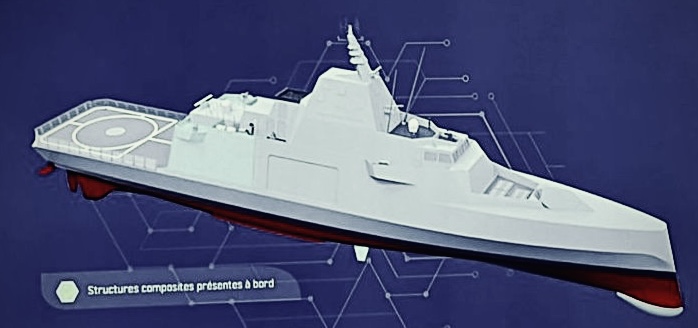
Changes from the Gowind 2500 corvette:
- Integrated antennas in an enlarged topside structure
- SSMs moved from midships to bow section (to make way for the integrated topside)
- Reverse angled bow
- Smaller, stealthier bridge superstructure (implies the adoption of a digital combat bridge using TV screens / virtual reality for 360 degree coverage instead of direct vision to the outside)
Source:
For comparison’s sake, here’s the new design (1st image) vs. the old design (2nd image) as sold to Egypt, UAE, Romania and perhaps soon Greece.
Attachments
Last edited:
- Joined
- 11 February 2007
- Messages
- 2,566
- Reaction score
- 4,369
A new, stealthier variant of the Gowind class?
Changes from the Gowind 2500 corvette:
- Integrated antennas in an enlarged topside structure
- SSMs moved from midships to bow section (to make way for the integrated topside)
- Reverse angled bow
- Smaller, stealthier bridge superstructure (implies the adoption of a digital combat bridge using TV screens / virtual reality for 360 degree coverage instead of direct vision to the outside)
Looks like a fairly substantial change in the bow-bulb as well - wider and shorter, and similarly some definite change at the stern, though I can't decide quite what I'm looking at, there are definitely three underwater structures - stern flap, rudder, and some sort of big skeg?
It's a bit difficult to see, but I think the funnel has migrated forwards, up against the new combined mast structure, and I think that's a stealth gun turret, but it's really difficult to see details due to the lack of contrast.
@DWG Pretty good eye you have there!
The underwater structure under the stern looks like a ducted propeller, similar to this video which they also released. Probably to reduce cavitation / improve acoustics at speed (see at 57s):
The bow bulb and reverse angle bow look very similar to the larger FDI… nothing really new there.
The gun is a BAE Bofors 57mm in its stealth cupola (same as aboard Visby class corvettes).
I’m pretty sure the funnel hasn’t moved. It’s the integrated mast that has moved backwards! ( to where the SSMs used to be).
The underwater structure under the stern looks like a ducted propeller, similar to this video which they also released. Probably to reduce cavitation / improve acoustics at speed (see at 57s):
The bow bulb and reverse angle bow look very similar to the larger FDI… nothing really new there.
The gun is a BAE Bofors 57mm in its stealth cupola (same as aboard Visby class corvettes).
I’m pretty sure the funnel hasn’t moved. It’s the integrated mast that has moved backwards! ( to where the SSMs used to be).
Attachments
This is the Gowind 2500 brochure you're looking for?hola, alguien podria hacer el favor de subir el archivo pdf del dcns gowind 2500?
Attachments
aljibe _109
ACCESS: Restricted
- Joined
- 13 June 2023
- Messages
- 3
- Reaction score
- 0
Gowind 1000 Corvette es adecuado para mares bravíos como los mares del sur?Gracias, si, es el archivo que buscaba
- Joined
- 22 January 2006
- Messages
- 4,213
- Reaction score
- 2,010
Please, write in English because that's the forum's language to ensure everyone can enjoy the contents.Gowind 1000 Corvette es adecuado para mares bravíos como los mares del sur?
Thanks
Saving this excellent article on the early Gowind designs for posterity before it gets lost in the internet abyss…
 web.archive.org
web.archive.org
Report: The corvettes and OPVs of the Gowind family


The new Gowinds are available in three main versions, each of which can obviously be adapted to the needs expressed by interested navies. With a length of 85 to 105 meters, these ships have displacements ranging from 1000 to 2500 tonnes.
Les corvettes et OPV de la famille Gowind | Mer et Marine
Report: The corvettes and OPVs of the Gowind family
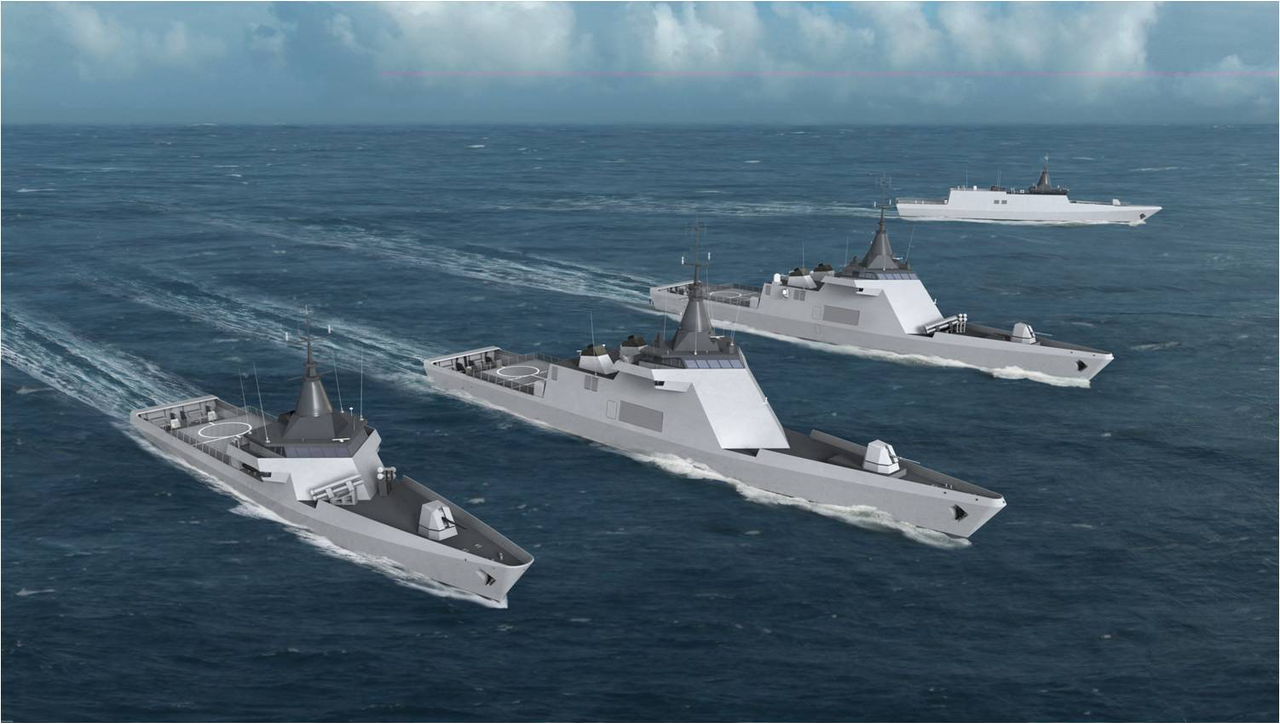
The Gowind family (© DCNS)
17/06/2009
Today we are republishing our report on the corvettes of the Gowind family, supplemented with numerous recent and mostly unpublished images. These views allow us to better appreciate the architecture and the different capacities that these ships, designed by DCNS, will be able to offer.
Launched in 2006, a first version of the Gowind corvettes had only moderate success. These 1000 to 2000 ton boats certainly had beautiful lines and substantial equipment, but they were above all designed as small, heavily armed frigates. However, it quickly became clear that many prospects had budgets that were too constrained to acquire this type of unit. Others were not interested in complex corvettes, preferring simple and robust vessels of the OPV (Ocean Patrol Vessel) type, enduring patrol boats capable of carrying out long patrols at sea. DCNS therefore completely revised its copy to present new new Gowind, more economical and better adapted to current needs. “In recent years, missions have evolved in terms of maritime safeguarding. For example, we see a growing need in the fight against piracy and drug trafficking. It was therefore interesting to have a range of ships responding to these missions but configurable enough to also carry out combat missions, with a graduation between the two,” explains Marc Leroy, Director of Surface Ships product line at DCNS.
Launched in 2006, a first version of the Gowind corvettes had only moderate success. These 1000 to 2000 ton boats certainly had beautiful lines and substantial equipment, but they were above all designed as small, heavily armed frigates. However, it quickly became clear that many prospects had budgets that were too constrained to acquire this type of unit. Others were not interested in complex corvettes, preferring simple and robust vessels of the OPV (Ocean Patrol Vessel) type, enduring patrol boats capable of carrying out long patrols at sea. DCNS therefore completely revised its copy to present new new Gowind, more economical and better adapted to current needs. “In recent years, missions have evolved in terms of maritime safeguarding. For example, we see a growing need in the fight against piracy and drug trafficking. It was therefore interesting to have a range of ships responding to these missions but configurable enough to also carry out combat missions, with a graduation between the two,” explains Marc Leroy, Director of Surface Ships product line at DCNS.
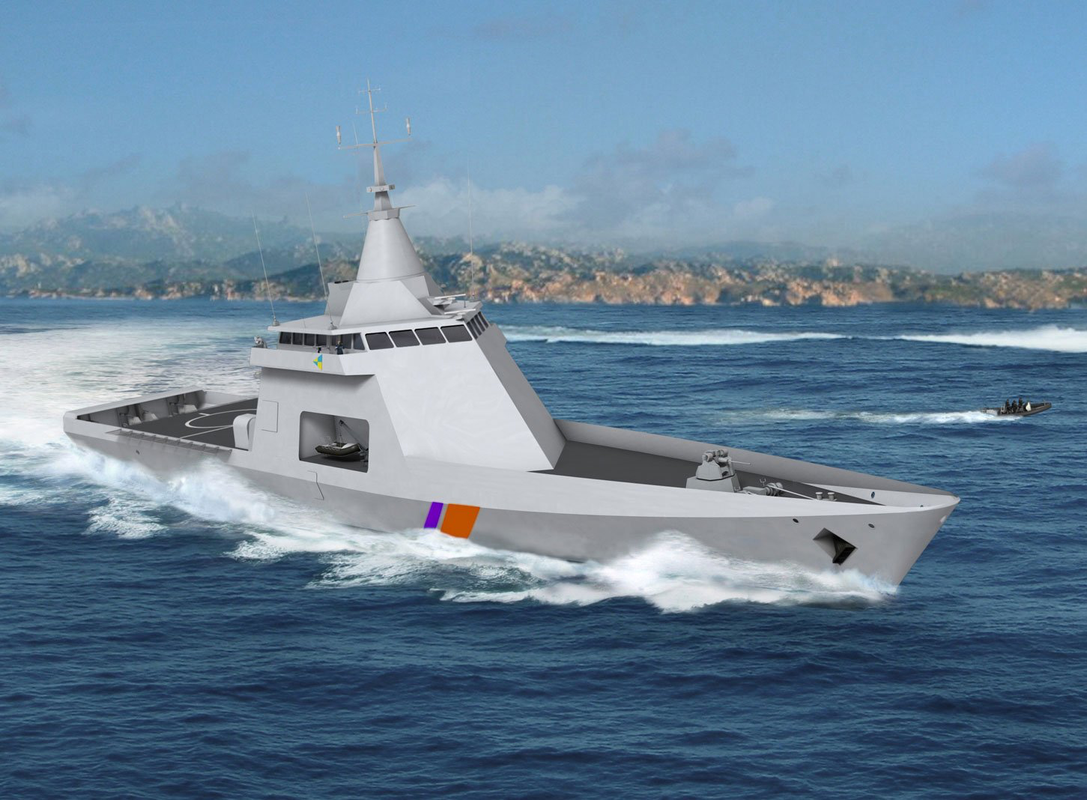
An OPV from the Gowind family (© DCNS)
Simple, economical and easy to build locally
From fisheries policing to the deployment of special forces, including surveillance and anti-shipping, the new Gowind family must cover a very wide range of missions. “We have imagined a boat that is simple to operate and maintain, with very competitive costs and equipped with systems that can adapt to the missions.” Significant work was carried out on the architecture of the ship, a simple architecture allowing different versions to be developed flexibly. This also allows for easy construction, capable of responding to technology transfer contracts. “We think that for these boats, we will almost systematically have technology transfer contracts. The design is therefore very simple, allowing construction in almost all construction sites around the world,” emphasizes Marc Leroy. Built to civilian standards for the platform part, the Gowinds benefit, for example, from basic propulsion. It will be based around two lines of shafts, each with a reduction gear, a diesel engine and a small electric motor. “Up to 6 or 7 knots, for port maneuvers or low-speed navigation, the small electric motor will take over from the diesel. This makes it possible to avoid clogging the diesels and to navigate without discharge in sensitive areas.” The smallest models may also have only one line of shafts.
In addition to the simplified architecture allowing easy local construction, DCNS is at the same time developing services to support emerging navies. This offer ranges from assistance in defining operational needs to financing assistance, without obviously forgetting “turnkey” maintenance packages over specific periods.
Rapid deployment of intervention boats
In order to determine the main general characteristics of the new Gowinds, DCNS approached its customers, starting with the first of them: the French Navy. In the discussions, the importance of implementing nautical intervention means quickly emerged. This need arises from feedback from sailors in controlling ships or intervening against drug traffickers or pirates. “It is very important to be able to quickly launch a boat to carry out an interception. And we must be able to deploy a second one fairly quickly which will provide support for the first.” Engineers worked with marine commandos on the rapid boat launching system. Rather than housing the boats in niches and handling by davits, a device requiring the carrying vessel to slow down for launching, a system using an inclined side and opening via the transom was chosen. “This system allows discreet launching while maintaining a certain course. In addition, launching allows the boat to be partially protected when the sea is rough.” The Gowinds will be able to carry boats of up to 11 meters, the size of the boats used by special forces.
Information system and monitoring means
Required to operate in vast maritime areas, the Gowinds are equipped with a single mast, bringing together the sensors. They have means allowing them to integrate into a surveillance system comprising different means, whether ships, aircraft, drones and satellites. “When it comes to surveillance, information is very important. There will be a good presentation of the tactical situation, satellite communication systems and even infrared surveillance means. In the field of radars, the integrated mast is designed to accommodate radars such as the MRR 3D or the Sea Giraffe. We can even install slightly larger systems, like the SMART-S from Thales.” All having at least one helicopter platform, the different Gowinds will also be able to use drones, tools which will play an important role in the surveillance of maritime areas in the future.
The corvettes also have a panoramic bridge, providing good old optics, for example against asymmetric threats. In this regard, the Gowind can be equipped with graduated means against this type of struggle, ranging from water cannons to remotely operated 12.7 mm or 20 mm cannons. The panoramic walkway also allows you to directly see the flight deck and the boat launching facility.
For large fleets and emerging navies
Presented for the first time in September 2008, during a show in South Africa, the new Gowind family is already attracting a lot of interest. The general need to strengthen the means of maritime surveillance and the design flexibility of the new DCNS product mean that the French corvette seems to find a very favorable initial response on the market. For export, the sales potential would be significant, especially since the manufacturer has worked on a product that is economically accessible and can easily be built locally. But the new Gowind is not just aimed at emerging navies. DCNS can notably present its corvette to the French Navy with a view to ensuring the replacement, over the next decade, of the 9 avisos still in service, as well as the 10 P400 type patrol boats. The French fleet is, in fact, looking for large offshore patrol boats that are inexpensive, durable and economical to maintain. It should also be noted that the Gowinds have equipment transport capabilities, particularly on the rear deck.
Different models for different missions
Simple, economical and easy to build locally
From fisheries policing to the deployment of special forces, including surveillance and anti-shipping, the new Gowind family must cover a very wide range of missions. “We have imagined a boat that is simple to operate and maintain, with very competitive costs and equipped with systems that can adapt to the missions.” Significant work was carried out on the architecture of the ship, a simple architecture allowing different versions to be developed flexibly. This also allows for easy construction, capable of responding to technology transfer contracts. “We think that for these boats, we will almost systematically have technology transfer contracts. The design is therefore very simple, allowing construction in almost all construction sites around the world,” emphasizes Marc Leroy. Built to civilian standards for the platform part, the Gowinds benefit, for example, from basic propulsion. It will be based around two lines of shafts, each with a reduction gear, a diesel engine and a small electric motor. “Up to 6 or 7 knots, for port maneuvers or low-speed navigation, the small electric motor will take over from the diesel. This makes it possible to avoid clogging the diesels and to navigate without discharge in sensitive areas.” The smallest models may also have only one line of shafts.
In addition to the simplified architecture allowing easy local construction, DCNS is at the same time developing services to support emerging navies. This offer ranges from assistance in defining operational needs to financing assistance, without obviously forgetting “turnkey” maintenance packages over specific periods.
Rapid deployment of intervention boats
In order to determine the main general characteristics of the new Gowinds, DCNS approached its customers, starting with the first of them: the French Navy. In the discussions, the importance of implementing nautical intervention means quickly emerged. This need arises from feedback from sailors in controlling ships or intervening against drug traffickers or pirates. “It is very important to be able to quickly launch a boat to carry out an interception. And we must be able to deploy a second one fairly quickly which will provide support for the first.” Engineers worked with marine commandos on the rapid boat launching system. Rather than housing the boats in niches and handling by davits, a device requiring the carrying vessel to slow down for launching, a system using an inclined side and opening via the transom was chosen. “This system allows discreet launching while maintaining a certain course. In addition, launching allows the boat to be partially protected when the sea is rough.” The Gowinds will be able to carry boats of up to 11 meters, the size of the boats used by special forces.
Information system and monitoring means
Required to operate in vast maritime areas, the Gowinds are equipped with a single mast, bringing together the sensors. They have means allowing them to integrate into a surveillance system comprising different means, whether ships, aircraft, drones and satellites. “When it comes to surveillance, information is very important. There will be a good presentation of the tactical situation, satellite communication systems and even infrared surveillance means. In the field of radars, the integrated mast is designed to accommodate radars such as the MRR 3D or the Sea Giraffe. We can even install slightly larger systems, like the SMART-S from Thales.” All having at least one helicopter platform, the different Gowinds will also be able to use drones, tools which will play an important role in the surveillance of maritime areas in the future.
The corvettes also have a panoramic bridge, providing good old optics, for example against asymmetric threats. In this regard, the Gowind can be equipped with graduated means against this type of struggle, ranging from water cannons to remotely operated 12.7 mm or 20 mm cannons. The panoramic walkway also allows you to directly see the flight deck and the boat launching facility.
For large fleets and emerging navies
Presented for the first time in September 2008, during a show in South Africa, the new Gowind family is already attracting a lot of interest. The general need to strengthen the means of maritime surveillance and the design flexibility of the new DCNS product mean that the French corvette seems to find a very favorable initial response on the market. For export, the sales potential would be significant, especially since the manufacturer has worked on a product that is economically accessible and can easily be built locally. But the new Gowind is not just aimed at emerging navies. DCNS can notably present its corvette to the French Navy with a view to ensuring the replacement, over the next decade, of the 9 avisos still in service, as well as the 10 P400 type patrol boats. The French fleet is, in fact, looking for large offshore patrol boats that are inexpensive, durable and economical to maintain. It should also be noted that the Gowinds have equipment transport capabilities, particularly on the rear deck.
Different models for different missions
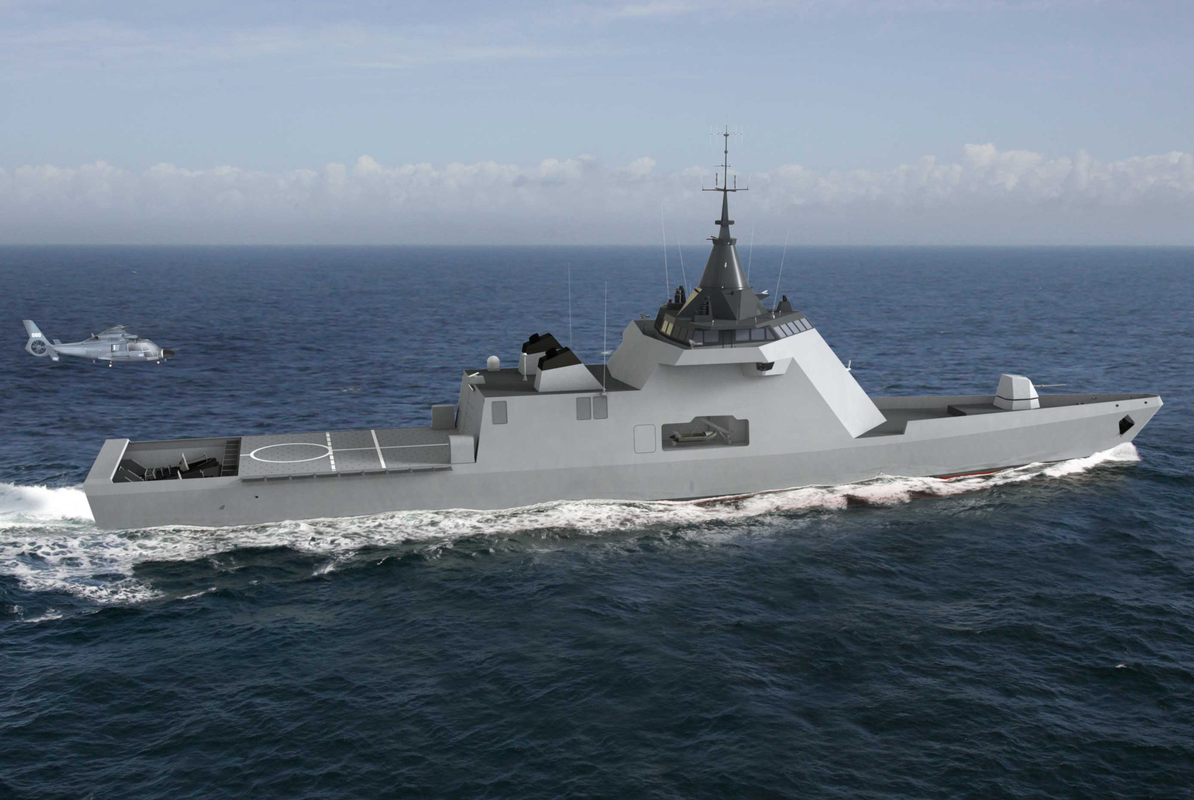
Corvette type Gowind Action credits: DCNS |
The new Gowinds are available in three main versions, each of which can obviously be adapted to the needs expressed by interested navies. With a length of 85 to 105 meters, these ships have displacements ranging from 1000 to 2500 tonnes.
Last edited:
GOWIND CONTROL
Weakly armed, Gowind Control is dedicated to maritime protection in Exclusive Economic Zones (EEZ). In its simplest version (OPV), this model can be equipped with remotely operated cannons (such as a 20mm mount at the front) and water cannons. In a more advanced version, it is possible to install a 76 mm turret and four anti-ship missiles on the foredeck on the platform. The Gowind Control has a helicopter platform but no hangar, unlike other models. Like its "cousins", however, it is equipped at the stern with a launching system for fast boats.
Weakly armed, Gowind Control is dedicated to maritime protection in Exclusive Economic Zones (EEZ). In its simplest version (OPV), this model can be equipped with remotely operated cannons (such as a 20mm mount at the front) and water cannons. In a more advanced version, it is possible to install a 76 mm turret and four anti-ship missiles on the foredeck on the platform. The Gowind Control has a helicopter platform but no hangar, unlike other models. Like its "cousins", however, it is equipped at the stern with a launching system for fast boats.
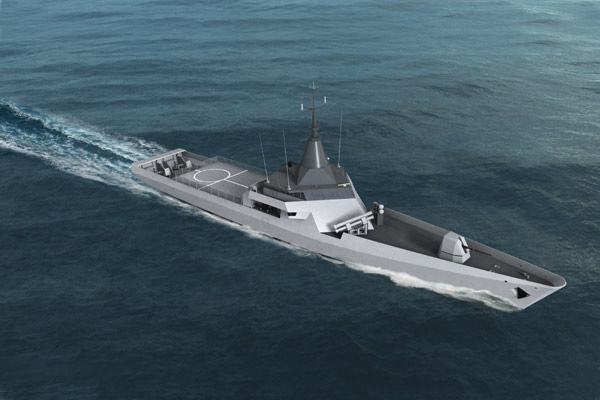
Gowind Control (© DCNS)
Attachments
-
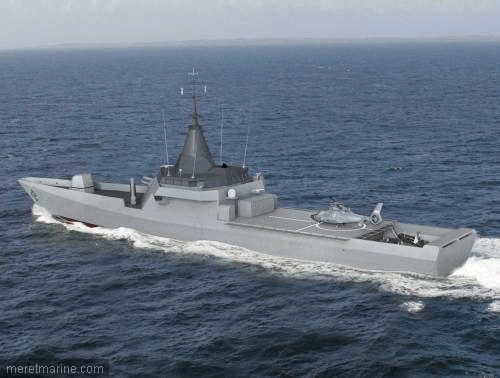 IMG_1573.png317.2 KB · Views: 68
IMG_1573.png317.2 KB · Views: 68 -
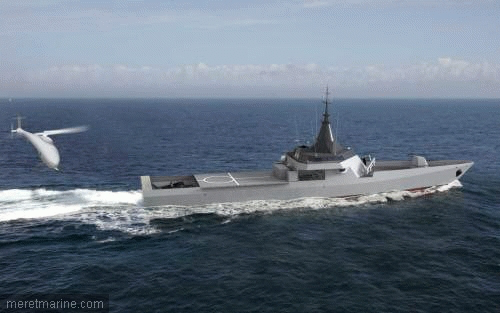 IMG_1574.png255.5 KB · Views: 60
IMG_1574.png255.5 KB · Views: 60 -
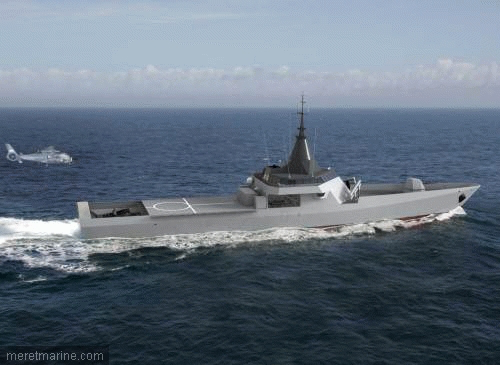 IMG_1575.png291.9 KB · Views: 58
IMG_1575.png291.9 KB · Views: 58 -
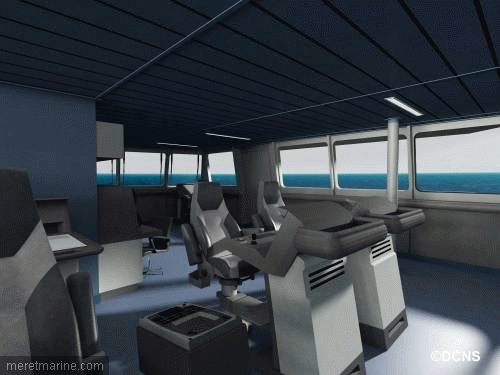 IMG_1576.png328.3 KB · Views: 54
IMG_1576.png328.3 KB · Views: 54 -
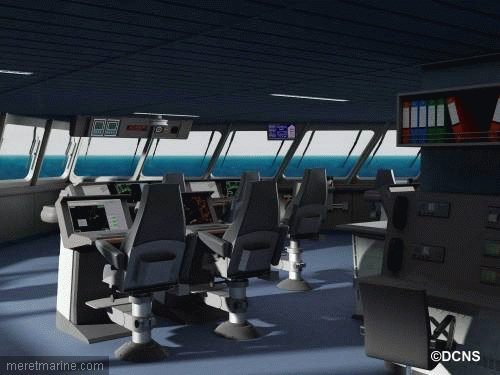 IMG_1577.png337.6 KB · Views: 55
IMG_1577.png337.6 KB · Views: 55 -
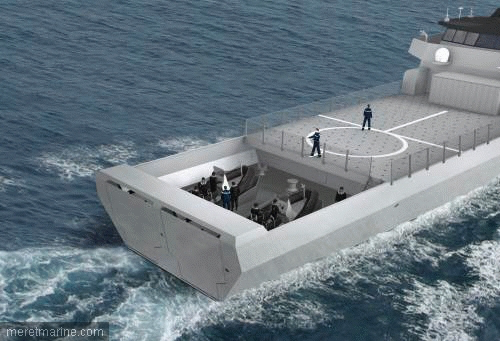 IMG_1579.png312.1 KB · Views: 50
IMG_1579.png312.1 KB · Views: 50 -
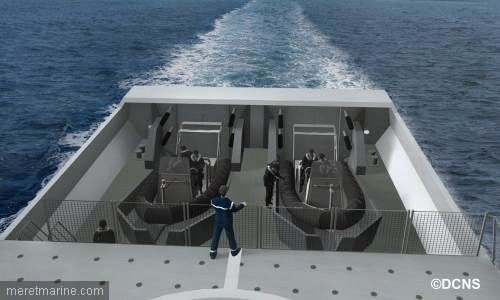 IMG_1578.png271.6 KB · Views: 55
IMG_1578.png271.6 KB · Views: 55 -
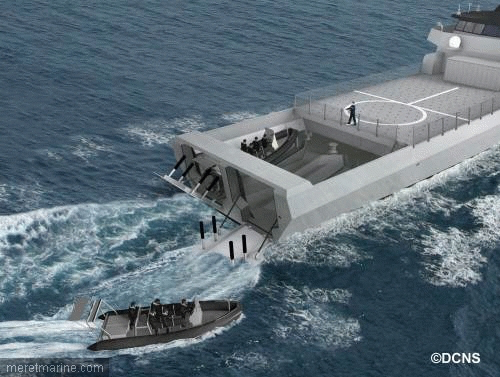 IMG_1580.png357.5 KB · Views: 55
IMG_1580.png357.5 KB · Views: 55 -
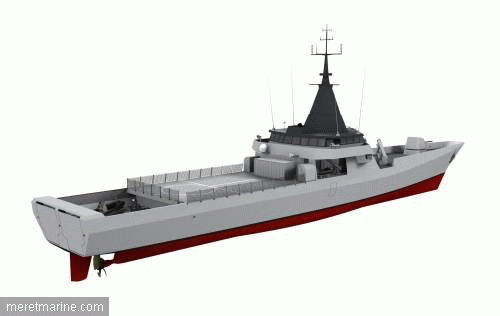 IMG_1583.png87.1 KB · Views: 54
IMG_1583.png87.1 KB · Views: 54 -
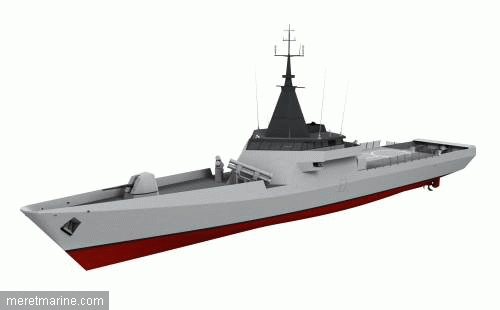 IMG_1584.png79.6 KB · Views: 58
IMG_1584.png79.6 KB · Views: 58 -
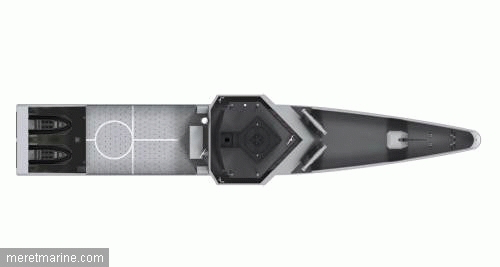 IMG_1586.png66.4 KB · Views: 64
IMG_1586.png66.4 KB · Views: 64 -
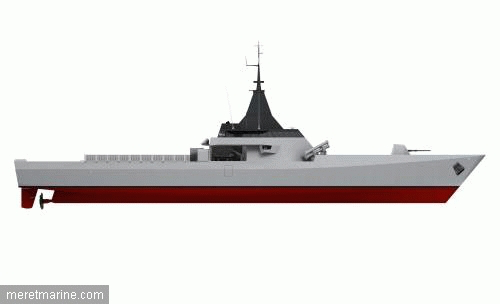 IMG_1585.png61.6 KB · Views: 61
IMG_1585.png61.6 KB · Views: 61 -
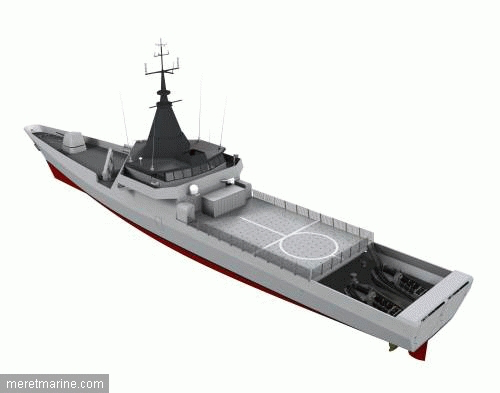 IMG_1587.png111.7 KB · Views: 57
IMG_1587.png111.7 KB · Views: 57 -
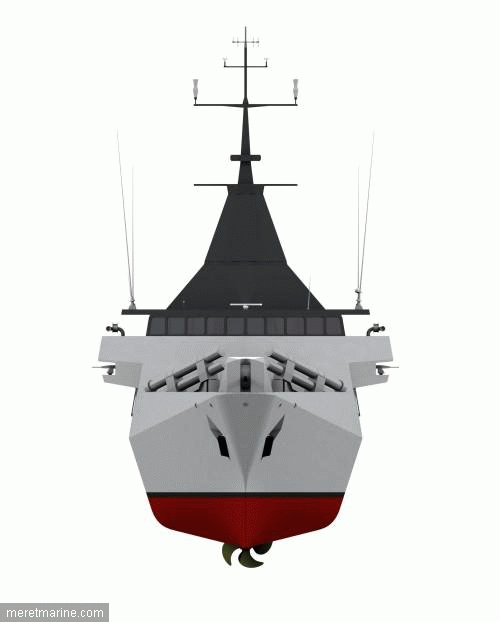 IMG_1581.png140.6 KB · Views: 54
IMG_1581.png140.6 KB · Views: 54 -
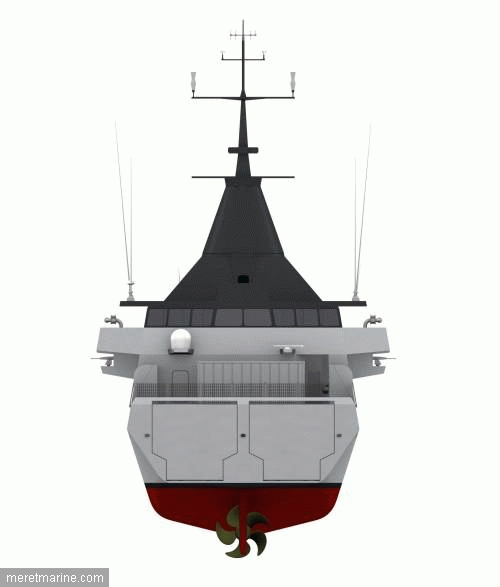 IMG_1582.png146.9 KB · Views: 52
IMG_1582.png146.9 KB · Views: 52
Last edited:
GOWIND PRESENCE
The larger Gowind Presence must also carry out coastguard missions but its larger size allows it to patrol longer. The autonomy is significant, displaying 5000 nautical miles at 12 knots (compared to 3500 nautical miles at 12 knots for the Gowind Control), i.e. a deployment of around two weeks. “These are ocean-going ships, capable of staying at sea to remain in operation for a certain time. The maritime interests of countries extend to the limits of the EEZ and, when you look at what is happening with piracy in the Indian Ocean, you often have to control areas quite far from ports.” The rapid intervention capacity is also reinforced on the Gowind Presence, with a hangar for a helicopter or drones.
The larger Gowind Presence must also carry out coastguard missions but its larger size allows it to patrol longer. The autonomy is significant, displaying 5000 nautical miles at 12 knots (compared to 3500 nautical miles at 12 knots for the Gowind Control), i.e. a deployment of around two weeks. “These are ocean-going ships, capable of staying at sea to remain in operation for a certain time. The maritime interests of countries extend to the limits of the EEZ and, when you look at what is happening with piracy in the Indian Ocean, you often have to control areas quite far from ports.” The rapid intervention capacity is also reinforced on the Gowind Presence, with a hangar for a helicopter or drones.
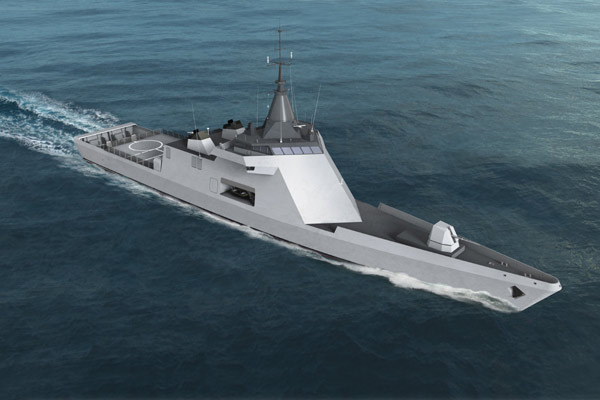
Gowind Presence (© DCNS)
Attachments
-
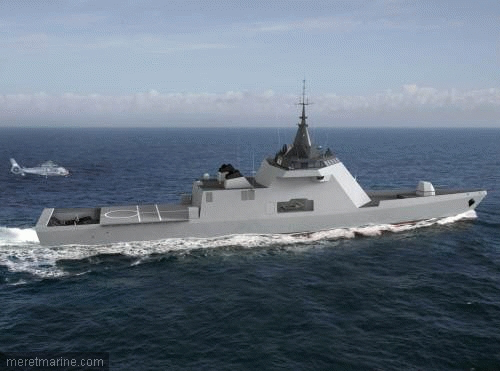 IMG_1590.png295.3 KB · Views: 49
IMG_1590.png295.3 KB · Views: 49 -
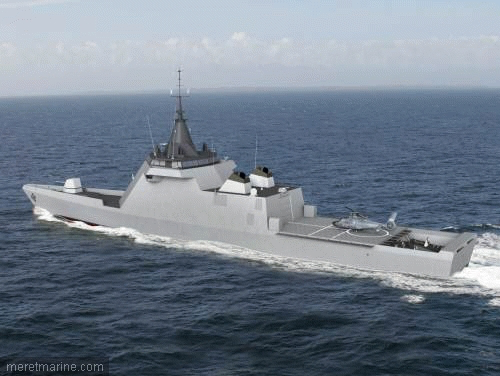 IMG_1591.png306.3 KB · Views: 46
IMG_1591.png306.3 KB · Views: 46 -
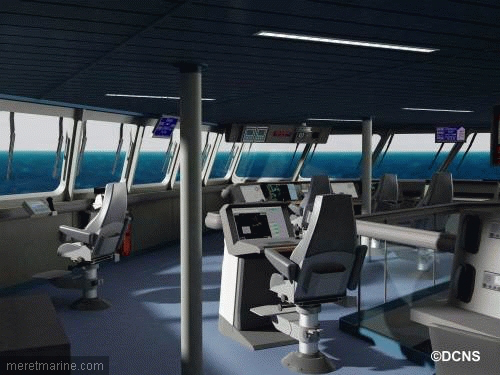 IMG_1592.png351 KB · Views: 45
IMG_1592.png351 KB · Views: 45 -
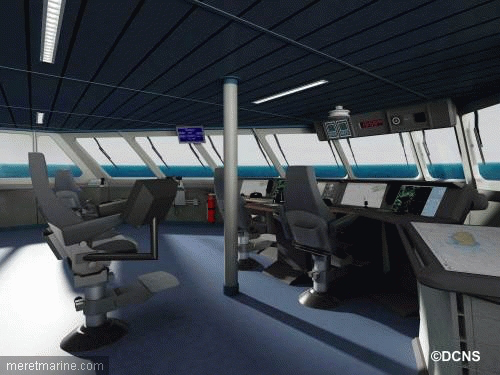 IMG_1593.png352.2 KB · Views: 44
IMG_1593.png352.2 KB · Views: 44 -
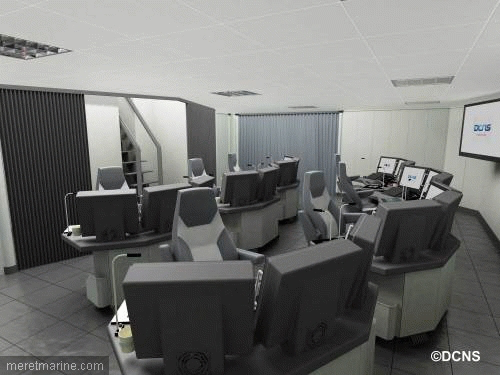 IMG_1594.png298.5 KB · Views: 42
IMG_1594.png298.5 KB · Views: 42 -
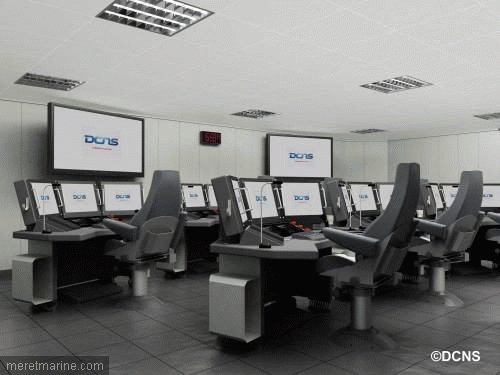 IMG_1595.png300.5 KB · Views: 45
IMG_1595.png300.5 KB · Views: 45 -
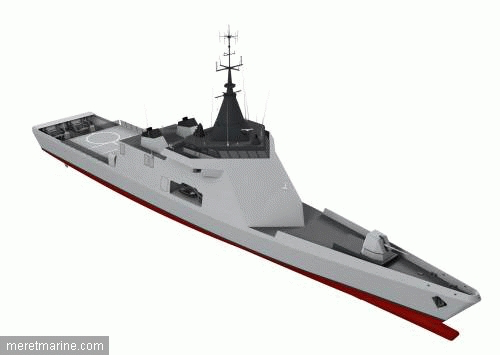 IMG_1596.png100.6 KB · Views: 45
IMG_1596.png100.6 KB · Views: 45 -
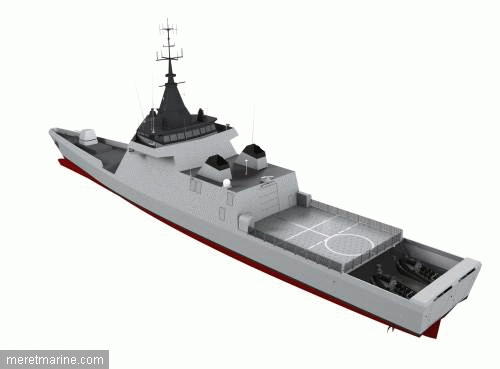 IMG_1598.png107.1 KB · Views: 44
IMG_1598.png107.1 KB · Views: 44 -
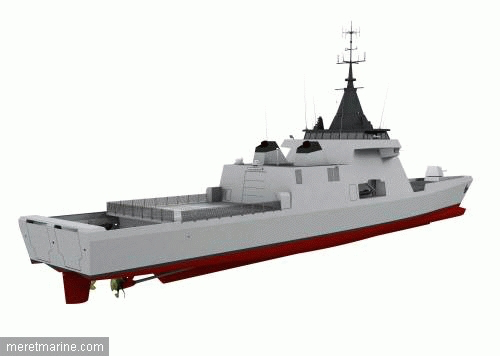 IMG_1597.png99.9 KB · Views: 44
IMG_1597.png99.9 KB · Views: 44 -
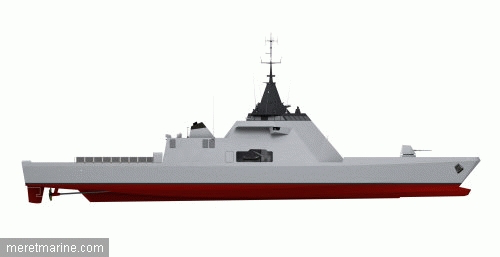 IMG_1599.png59.8 KB · Views: 47
IMG_1599.png59.8 KB · Views: 47 -
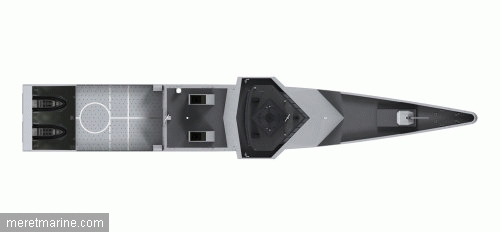 IMG_1600.png60.9 KB · Views: 47
IMG_1600.png60.9 KB · Views: 47 -
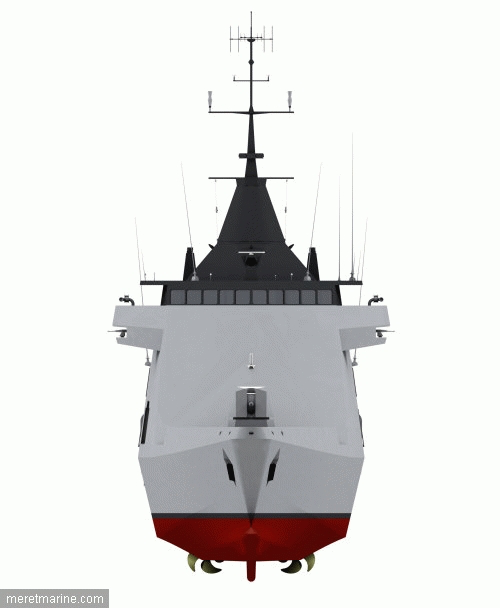 IMG_1601.png142 KB · Views: 41
IMG_1601.png142 KB · Views: 41 -
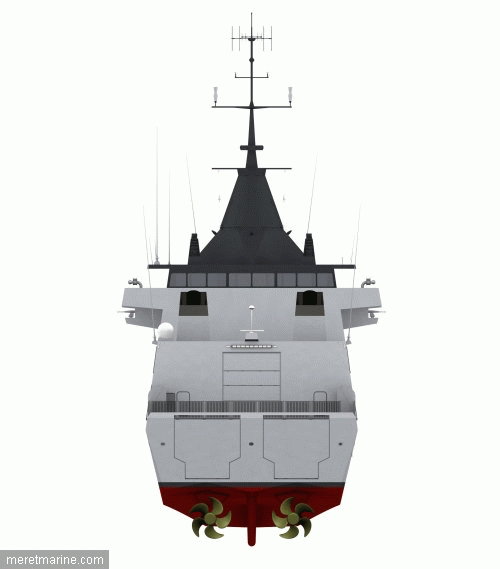 IMG_1602.png126.7 KB · Views: 42
IMG_1602.png126.7 KB · Views: 42
Last edited:
GOWIND ACTION
Designed on the same hull as the Gowind Presence, the Gowind Action has more extensive equipment. In terms of self-defense, the armament can be supplemented with vertically launched surface-to-air missiles (Mica VL, Umkhonto, Crotale, etc.). It should also be noted that, like the Gowind Control, the possibility of embarking the new Exocet MM40 Block3 missile, equipped with GPS, gives these units a strike capability against coastal targets. On the Gowind Action, the detection means are also reinforced, with a three-dimensional radar, for example the MRR 3D from Thales (instead of a 2D radar or navigation radar). In the most armed version, it is also possible to add means of night vision (infrared) and even decoy launchers.
Designed on the same hull as the Gowind Presence, the Gowind Action has more extensive equipment. In terms of self-defense, the armament can be supplemented with vertically launched surface-to-air missiles (Mica VL, Umkhonto, Crotale, etc.). It should also be noted that, like the Gowind Control, the possibility of embarking the new Exocet MM40 Block3 missile, equipped with GPS, gives these units a strike capability against coastal targets. On the Gowind Action, the detection means are also reinforced, with a three-dimensional radar, for example the MRR 3D from Thales (instead of a 2D radar or navigation radar). In the most armed version, it is also possible to add means of night vision (infrared) and even decoy launchers.
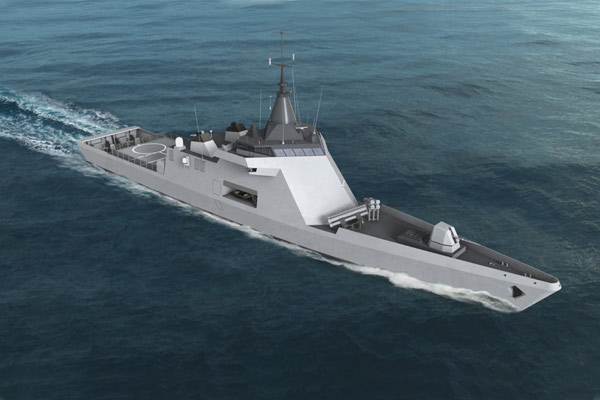
Gowind Action (© DCNS)
Attachments
-
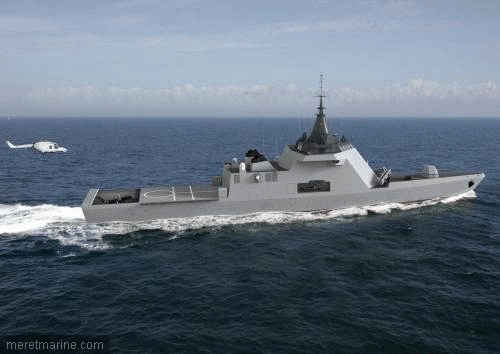 IMG_1603.png288.4 KB · Views: 40
IMG_1603.png288.4 KB · Views: 40 -
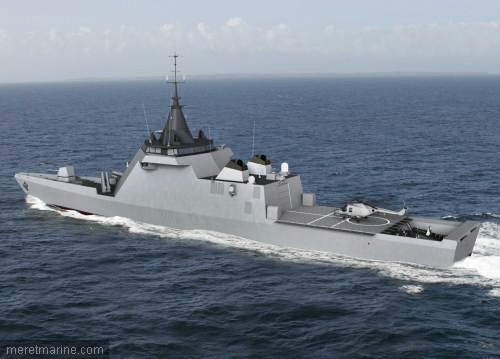 IMG_1604.png298.9 KB · Views: 36
IMG_1604.png298.9 KB · Views: 36 -
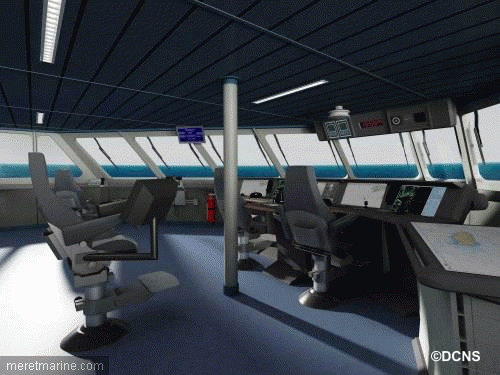 IMG_1593.png352.2 KB · Views: 34
IMG_1593.png352.2 KB · Views: 34 -
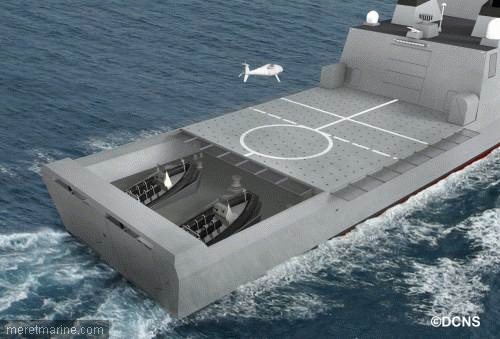 IMG_1607.png321.5 KB · Views: 34
IMG_1607.png321.5 KB · Views: 34 -
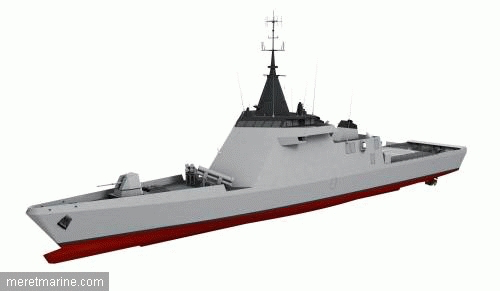 IMG_1610.png81.3 KB · Views: 36
IMG_1610.png81.3 KB · Views: 36 -
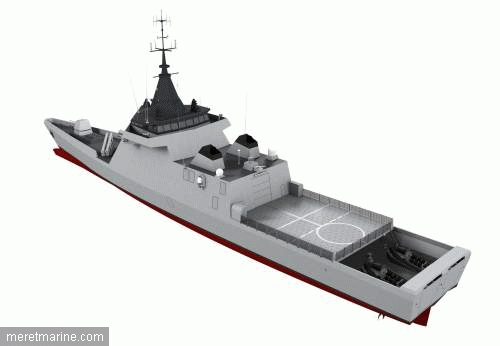 IMG_1613.png106.1 KB · Views: 36
IMG_1613.png106.1 KB · Views: 36 -
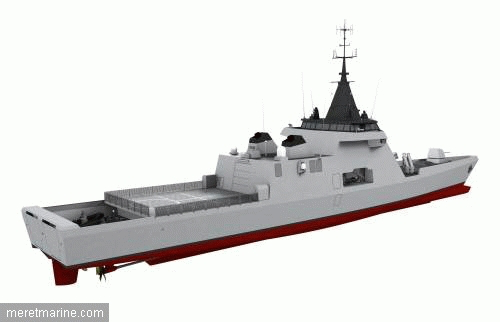 IMG_1612.png94.1 KB · Views: 34
IMG_1612.png94.1 KB · Views: 34 -
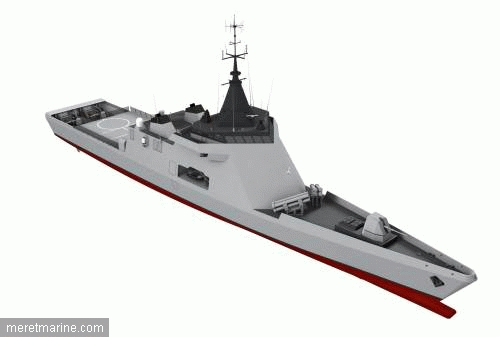 IMG_1611.png91.8 KB · Views: 40
IMG_1611.png91.8 KB · Views: 40 -
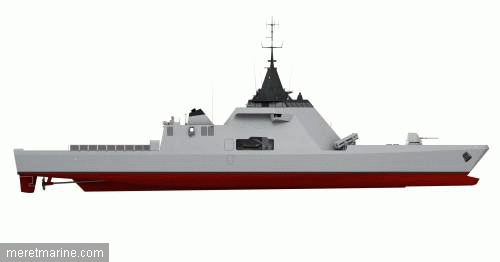 IMG_1614.png63.9 KB · Views: 51
IMG_1614.png63.9 KB · Views: 51 -
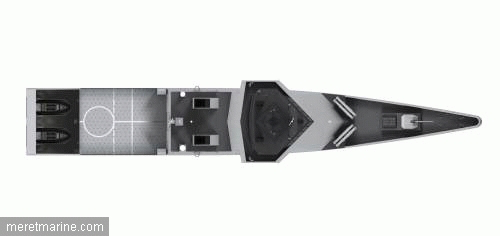 IMG_1615.png61.5 KB · Views: 47
IMG_1615.png61.5 KB · Views: 47 -
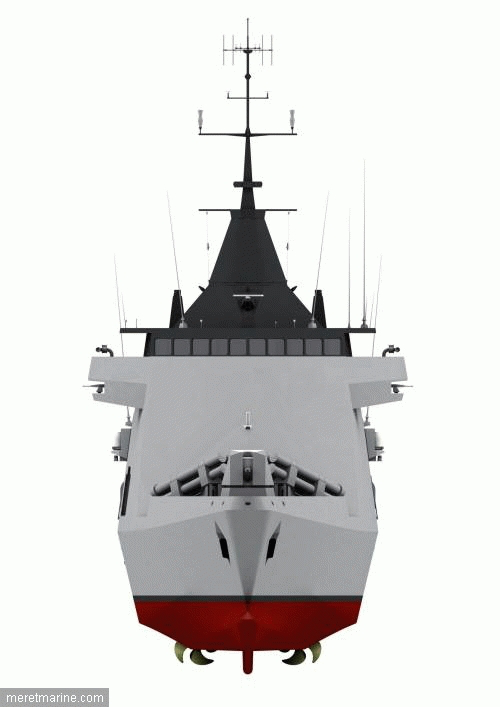 IMG_1608.png200.8 KB · Views: 41
IMG_1608.png200.8 KB · Views: 41 -
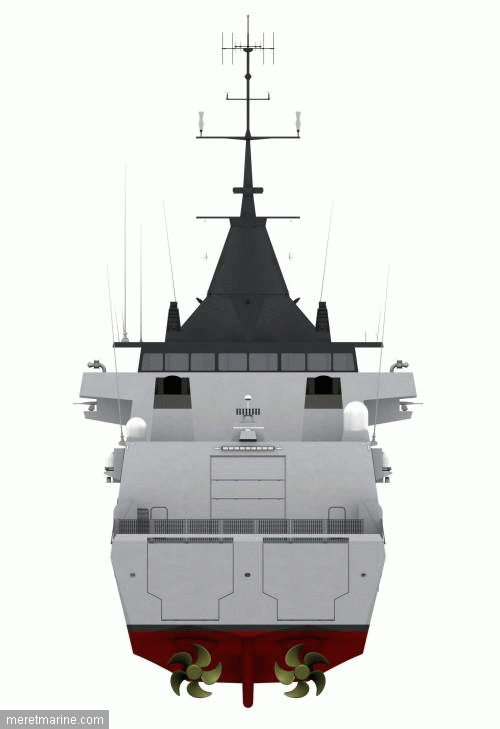 IMG_1609.png217.9 KB · Views: 41
IMG_1609.png217.9 KB · Views: 41
GOWIND COMBAT
These three versions of the Gowind remain, nevertheless, “reference points”. As Marc Leroy explains: “There are no fixed ideas. These are major reference points corresponding to typical missions. Then, the size and equipment depends on the specific needs of the customer, who can also combine several models.”
Finally, DCNS has retained a version of the previous Gowind family, presented in 2006. The Gowind Combat, weighing around 2000 tonnes, is none other than the model which must be produced in two copies for Bulgaria. It has a platform and hangar for helicopters or drones, anti-ship missiles, vertically launched surface-to-air missiles and light torpedoes.
These three versions of the Gowind remain, nevertheless, “reference points”. As Marc Leroy explains: “There are no fixed ideas. These are major reference points corresponding to typical missions. Then, the size and equipment depends on the specific needs of the customer, who can also combine several models.”
Finally, DCNS has retained a version of the previous Gowind family, presented in 2006. The Gowind Combat, weighing around 2000 tonnes, is none other than the model which must be produced in two copies for Bulgaria. It has a platform and hangar for helicopters or drones, anti-ship missiles, vertically launched surface-to-air missiles and light torpedoes.
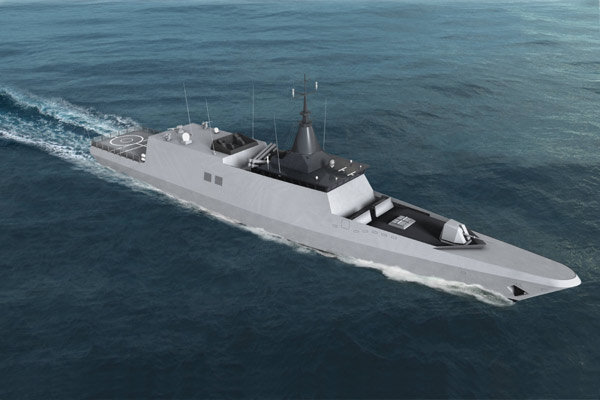
Gowind Combat (© DCNS)
Attachments
-
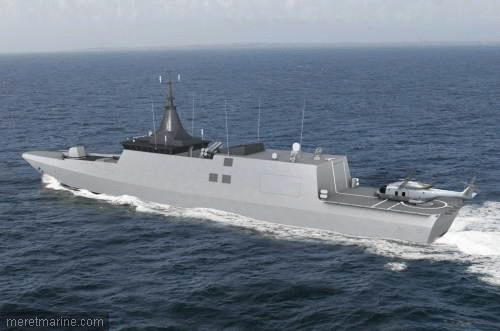 IMG_1618.png273.9 KB · Views: 40
IMG_1618.png273.9 KB · Views: 40 -
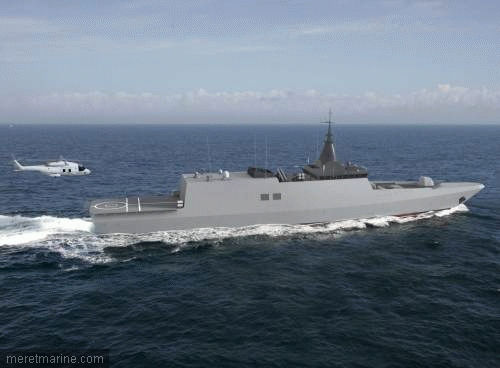 IMG_1619.png297 KB · Views: 43
IMG_1619.png297 KB · Views: 43 -
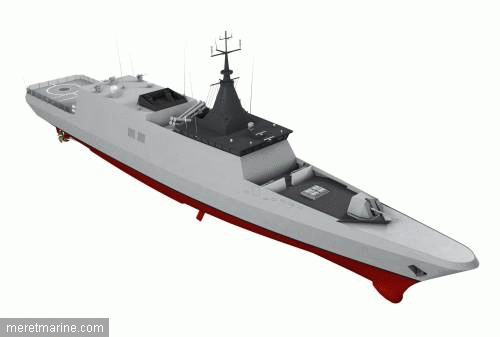 IMG_1622.png100.5 KB · Views: 43
IMG_1622.png100.5 KB · Views: 43 -
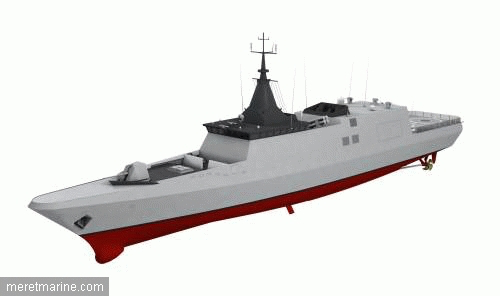 IMG_1623.png82.5 KB · Views: 46
IMG_1623.png82.5 KB · Views: 46 -
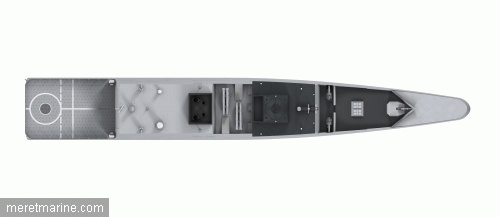 IMG_1627.png55 KB · Views: 49
IMG_1627.png55 KB · Views: 49 -
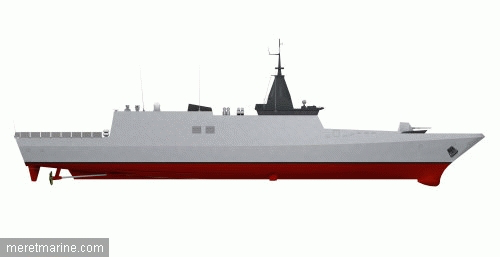 IMG_1626.png58.7 KB · Views: 52
IMG_1626.png58.7 KB · Views: 52 -
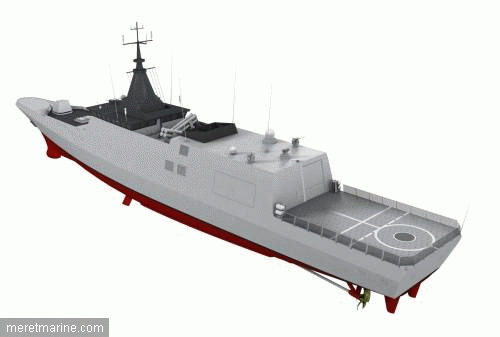 IMG_1625.png110.8 KB · Views: 41
IMG_1625.png110.8 KB · Views: 41 -
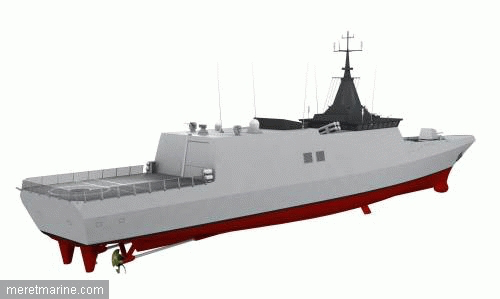 IMG_1624.png95.1 KB · Views: 38
IMG_1624.png95.1 KB · Views: 38 -
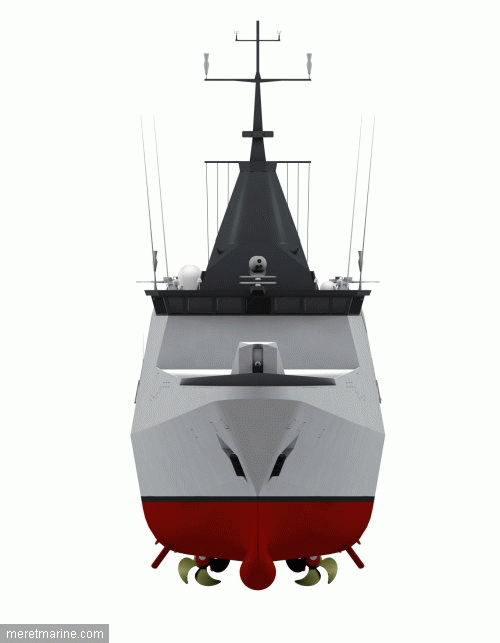 IMG_1620.png160.2 KB · Views: 56
IMG_1620.png160.2 KB · Views: 56 -
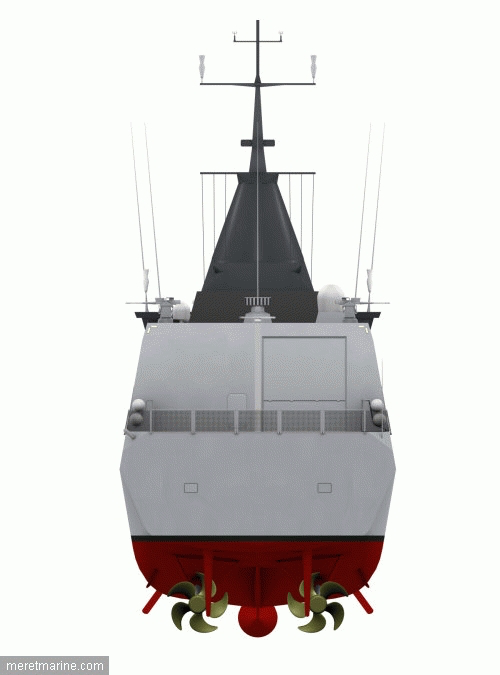 IMG_1621.png187 KB · Views: 63
IMG_1621.png187 KB · Views: 63
Scott Kenny
ACCESS: USAP
- Joined
- 15 May 2023
- Messages
- 11,628
- Reaction score
- 14,324
Did anything ever come of the NS3 SWATH design? Maybe as a sonar tow?Found some old info on the 1st generation Gowind corvettes... posting it here so this interesting family of designs doesn’t get lost in the internet abyss.
First up: the Gowind 120.
Then the Gowind 170.
Last the Gowind 200 which was sold to Bulgaria (but cancelled)
View attachment 658671
Common features include:
- High level of habitability (ANEP 24 standard), with 1-2 man cabins for officers, 2-4 man cabins for NCOs, and 4-6 man cabins for sailors
- Excellent IR signature reduction, with underwater exhausts for diesels
- High standard of survivability (DDS 079-1 standard) with separate engine rooms
- Joined
- 16 April 2008
- Messages
- 9,605
- Reaction score
- 14,494
Did anything ever come of the NS3 SWATH design? Maybe as a sonar tow?
No. I don't think any navy except the US operates dedicated sonar tow vessels.
The only non-US military SWATH vessels I can think of are the Latvian Skrunda-class patrol boats but those are rather smaller, an adaptation of an Abeking & Rasmussen pilot boat design. (Lithuania is also looking to buy some of these and Estonia has a civilian version for hydrological survey work.)
aljibe _109
ACCESS: Restricted
- Joined
- 13 June 2023
- Messages
- 3
- Reaction score
- 0
Hola, alguien puede mostrar información sobre la corbeta gowind 1000 y si algun país lo adquirió?, la entonces DCNS creo que público un archivo PDF de dicha corbeta, por desgracia no lo tengo, alguien podría publicarlo?, gracias
aljibe _109
ACCESS: Restricted
- Joined
- 13 June 2023
- Messages
- 3
- Reaction score
- 0
Hello, can someone show information about the gowind 1000 corvette and if any country acquired it? The then DCNS I think published a PDF file of said corvette, unfortunately I don't have it, could someone publish it?, thank you
Hello, can someone show information about the gowind 1000 corvette and if any country acquired it? The then DCNS I think published a PDF file of said corvette, unfortunately I don't have it, could someone publish it?, thank you
Here is the Gowind 1000 brochure and various pictures. At least 2 configurations were proposed, one with 8x Mica VL forward and 8x Exocet above the hangar, the other with these switched around (so 4-8x Exocet forward and 8x Mica VL along the hangar). There was also a stern mission bay.
It was offered to countries including Poland but there were no buyers.
Attachments
-
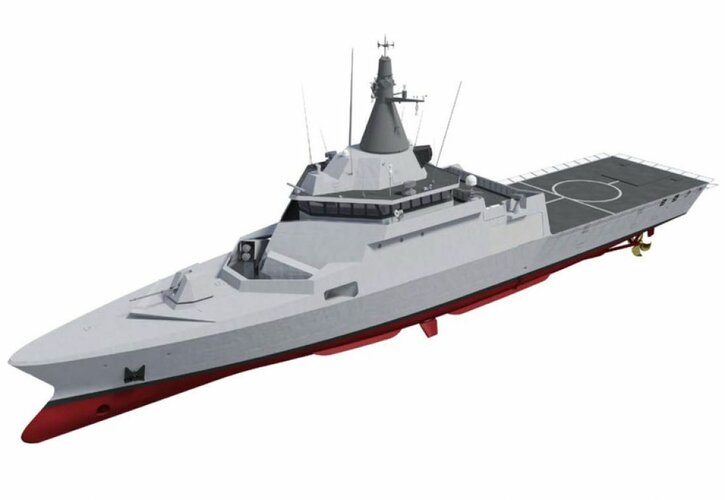 Gowind 1000 4x Exocet fwd.jpeg37.7 KB · Views: 65
Gowind 1000 4x Exocet fwd.jpeg37.7 KB · Views: 65 -
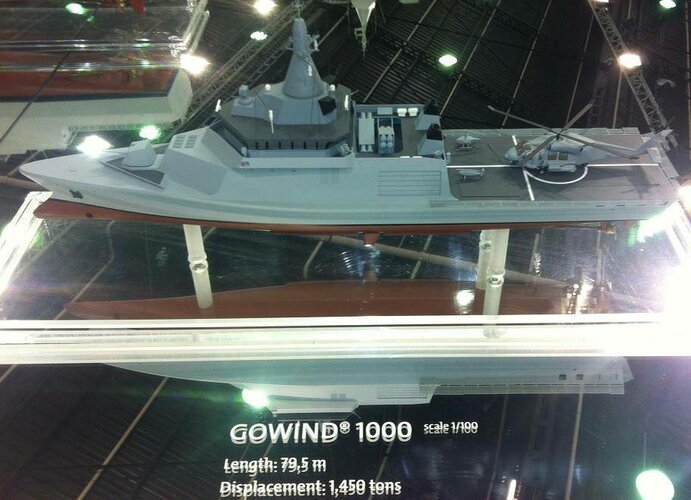 Gowind 1000 8x Mica VL fwd 4.jpeg75.5 KB · Views: 69
Gowind 1000 8x Mica VL fwd 4.jpeg75.5 KB · Views: 69 -
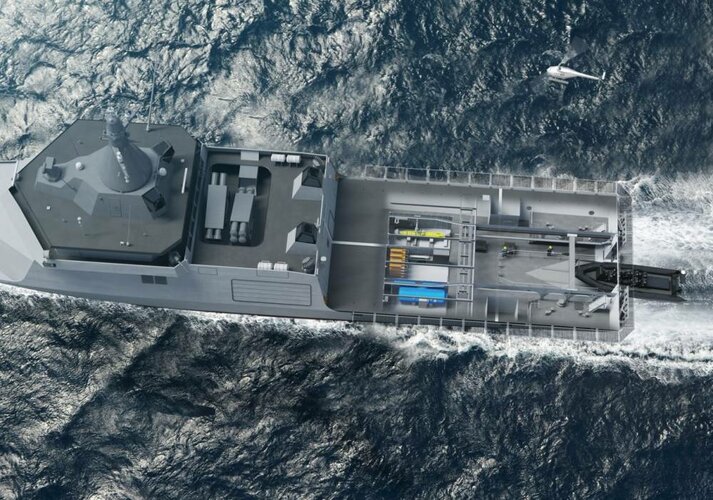 Gowind 1000 8x Mica VL fwd 3.jpeg141.7 KB · Views: 62
Gowind 1000 8x Mica VL fwd 3.jpeg141.7 KB · Views: 62 -
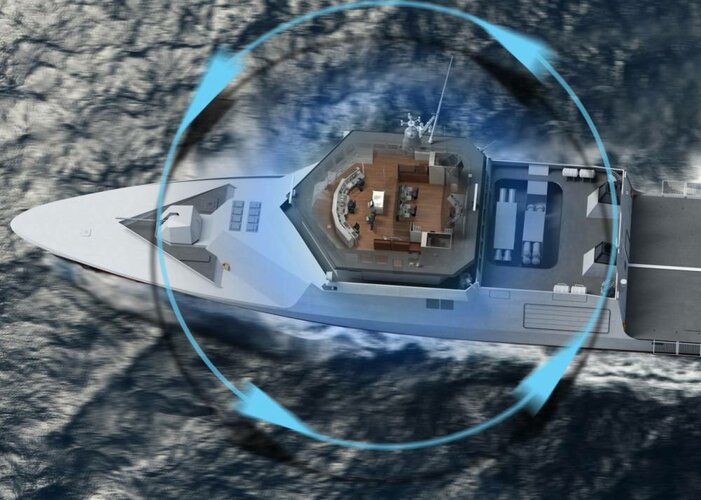 Gowind 1000 8x Mica VL fwd 2.jpeg91.3 KB · Views: 58
Gowind 1000 8x Mica VL fwd 2.jpeg91.3 KB · Views: 58 -
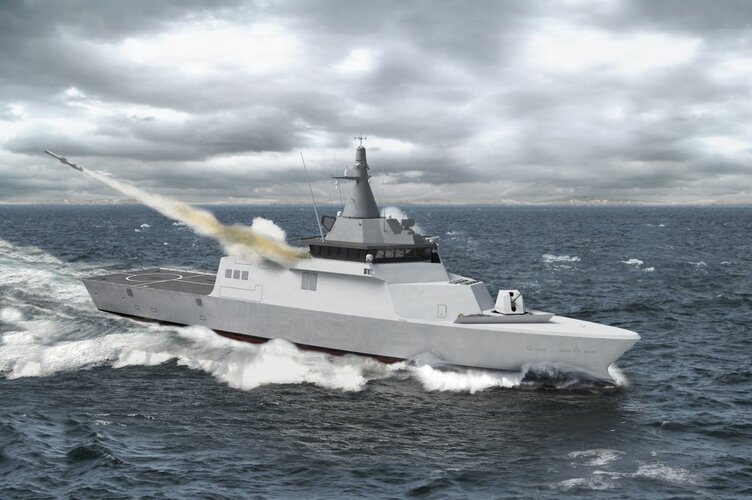 Gowind 1000 8x Mica VL fwd.jpeg150.2 KB · Views: 60
Gowind 1000 8x Mica VL fwd.jpeg150.2 KB · Views: 60 -
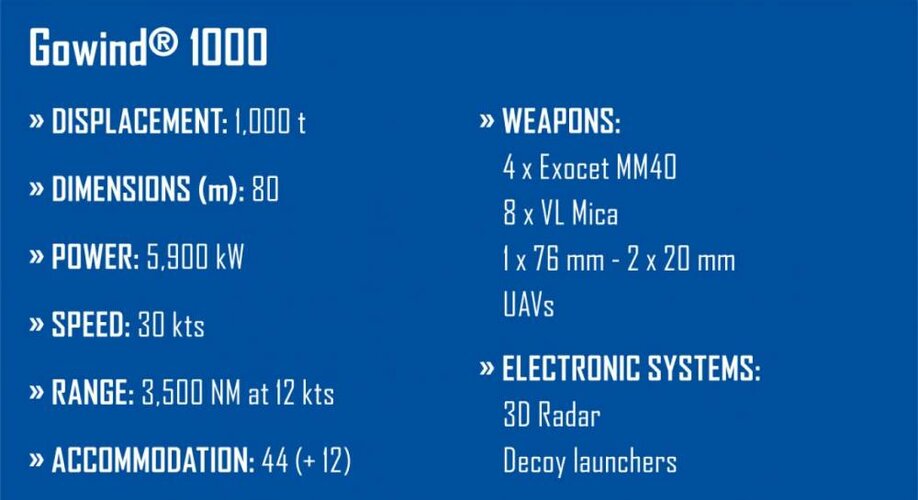 Gowind 1000 characteristics.jpeg44.5 KB · Views: 60
Gowind 1000 characteristics.jpeg44.5 KB · Views: 60 -
Gowind 1000 brochure.pdf2.2 MB · Views: 25
-
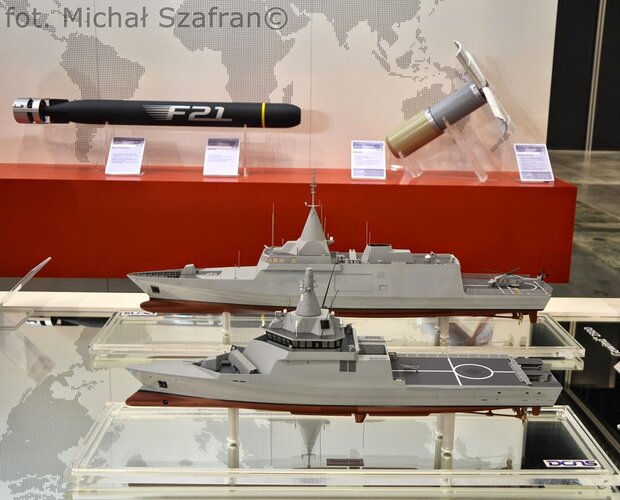 Gowind 1000 4x Exocet fwd 2.jpeg179.6 KB · Views: 61
Gowind 1000 4x Exocet fwd 2.jpeg179.6 KB · Views: 61 -
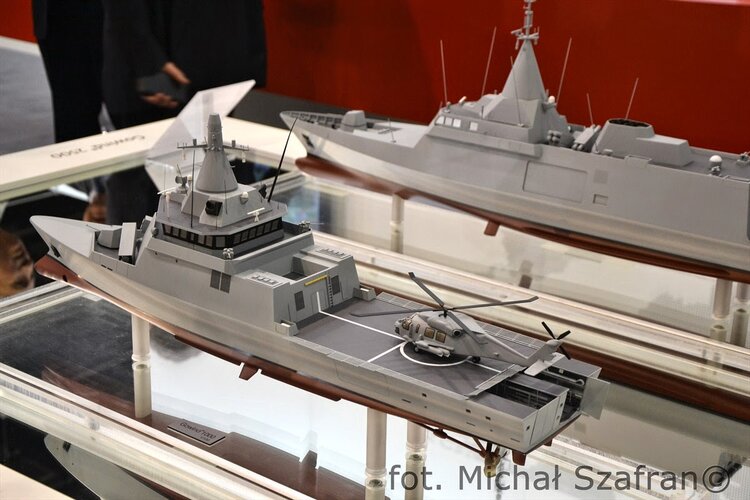 Gowind 1000 4x Exocet fwd 3.jpeg149.7 KB · Views: 67
Gowind 1000 4x Exocet fwd 3.jpeg149.7 KB · Views: 67 -
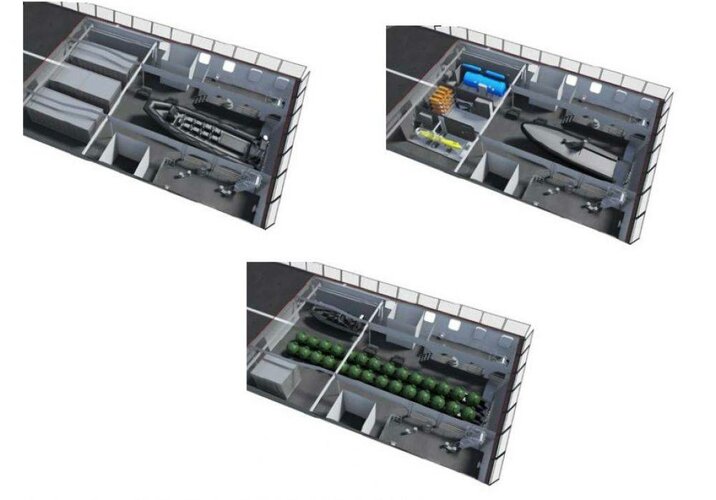 Gowind 1000 modular stern bay.jpeg56.2 KB · Views: 76
Gowind 1000 modular stern bay.jpeg56.2 KB · Views: 76
I found a clearer picture of this Naval Group concept… seems like a natural evolution of the Gowind 2500.A new, stealthier variant of the Gowind class?

Changes from the Gowind 2500 corvette:
- Integrated antennas in an enlarged topside structure
- SSMs moved from midships to bow section (to make way for the integrated topside)
- Reverse angled bow
- Smaller, stealthier bridge superstructure
I wonder if some of these design elements will make their way into the future French “Oceanic Corvette” that will replace the Floreal class based overseas.
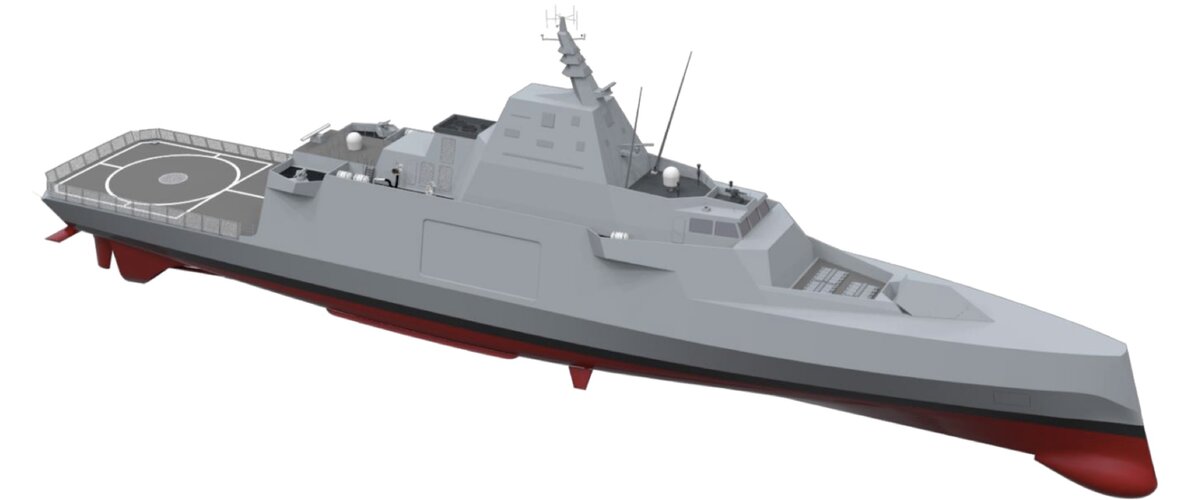
INNOVATION AT NAVAL GROUP: DEVELOPMENT OF NEW COMPOSITE SOLUTIONS
Last edited:
Ticonderoga
ACCESS: Restricted
- Joined
- 5 October 2024
- Messages
- 6
- Reaction score
- 1
Here is the Gowind 1000 brochure and various pictures. At least 2 configurations were proposed, one with 8x Mica VL forward and 8x Exocet above the hangar, the other with these switched around (so 4-8x Exocet forward and 8x Mica VL along the hangar). There was also a stern mission bay.
It was offered to countries including Poland but there were no buyers.
Here is the Gowind 1000 brochure and various pictures. At least 2 configurations were proposed, one with 8x Mica VL forward and 8x Exocet above the hangar, the other with these switched around (so 4-8x Exocet forward and 8x Mica VL along the hangar). There was also a stern mission bay.
It was offered to countries including Poland but there were no buyers
Do you by any chance know which VLS system MICA VL might be launched from? I'm inclined towards Sylver A43/50 but the spacing between the VLS cells as rendered seems somewhat strange.
Mica VL can in theory be launched from Sylver but as far as I know all installations to date have used a standalone launch container which is very lightweight (480kg) and allows for more flexible installation.Do you by any chance know which VLS system MICA VL might be launched from? I'm inclined towards Sylver A43/50 but the spacing between the VLS cells as rendered seems somewhat strange.
Here on a Baynunah corvette for example:



Last edited:
Ticonderoga
ACCESS: Restricted
- Joined
- 5 October 2024
- Messages
- 6
- Reaction score
- 1
Mica VL can in theory be launched from Sylver but as far as I know all installations to date have used a standalone launch container which is very lightweight (480kg) and allows for more flexible installation.
Here on a Baynunah corvette for example:



Would these dedicated MICA VL launchers have also been used in the proposed Romanian/Egyptian Gowinds? (images from previous posts in this thread)
These vessels IIRC would have been significantly larger than the Gowind 1000 and they look to my untrained eye like they have Sylver modules (16-24 cells)
Attachments
The Egyptian Gowinds use the dedicated Mica launchers as per pics here… I assume Romania would have been the same:Would these dedicated MICA VL launchers have also been used in the proposed Romanian/Egyptian Gowinds
El Fateh Gowind 2500 class Corvette Egyptian Naval Force
el fateh gowind 2500 class corvette egyptian navy naval force ens port said el moez al-ismaili
www.seaforces.org
Ticonderoga
ACCESS: Restricted
- Joined
- 5 October 2024
- Messages
- 6
- Reaction score
- 1
Thanks for the information...a bit unfortunate that they didn't/couldn't fit Sylver for more flexibility but I suppose it fits Egypt's requirements well enough.The Egyptian Gowinds use the dedicated Mica launchers as per pics here… I assume Romania would have been the same:
El Fateh Gowind 2500 class Corvette Egyptian Naval Force
el fateh gowind 2500 class corvette egyptian navy naval force ens port said el moez al-ismailiwww.seaforces.org
Similar threads
-
-
-
-
Naval Group SMX-31 future submarine concept
- Started by covert_shores
- Replies: 8
-

